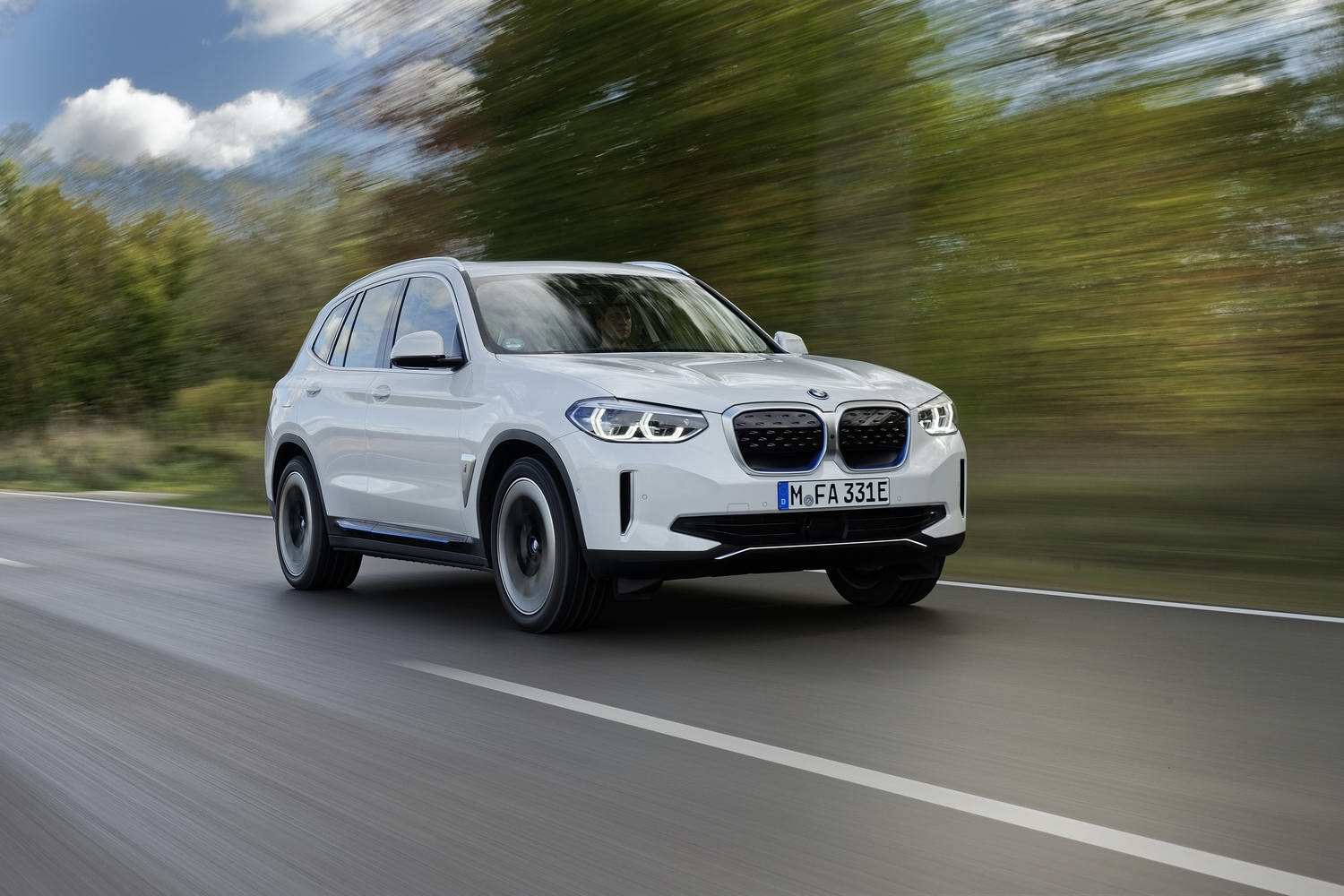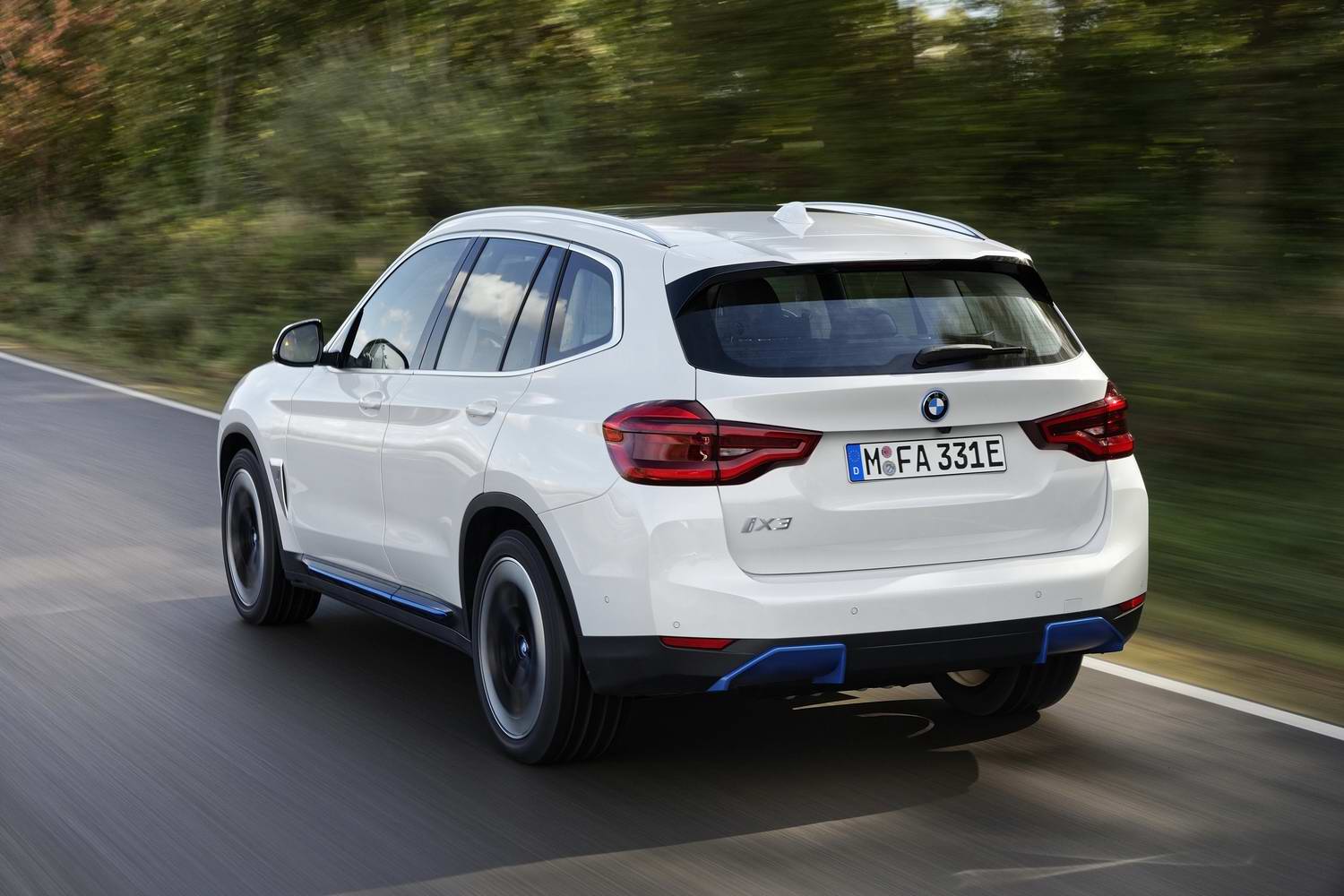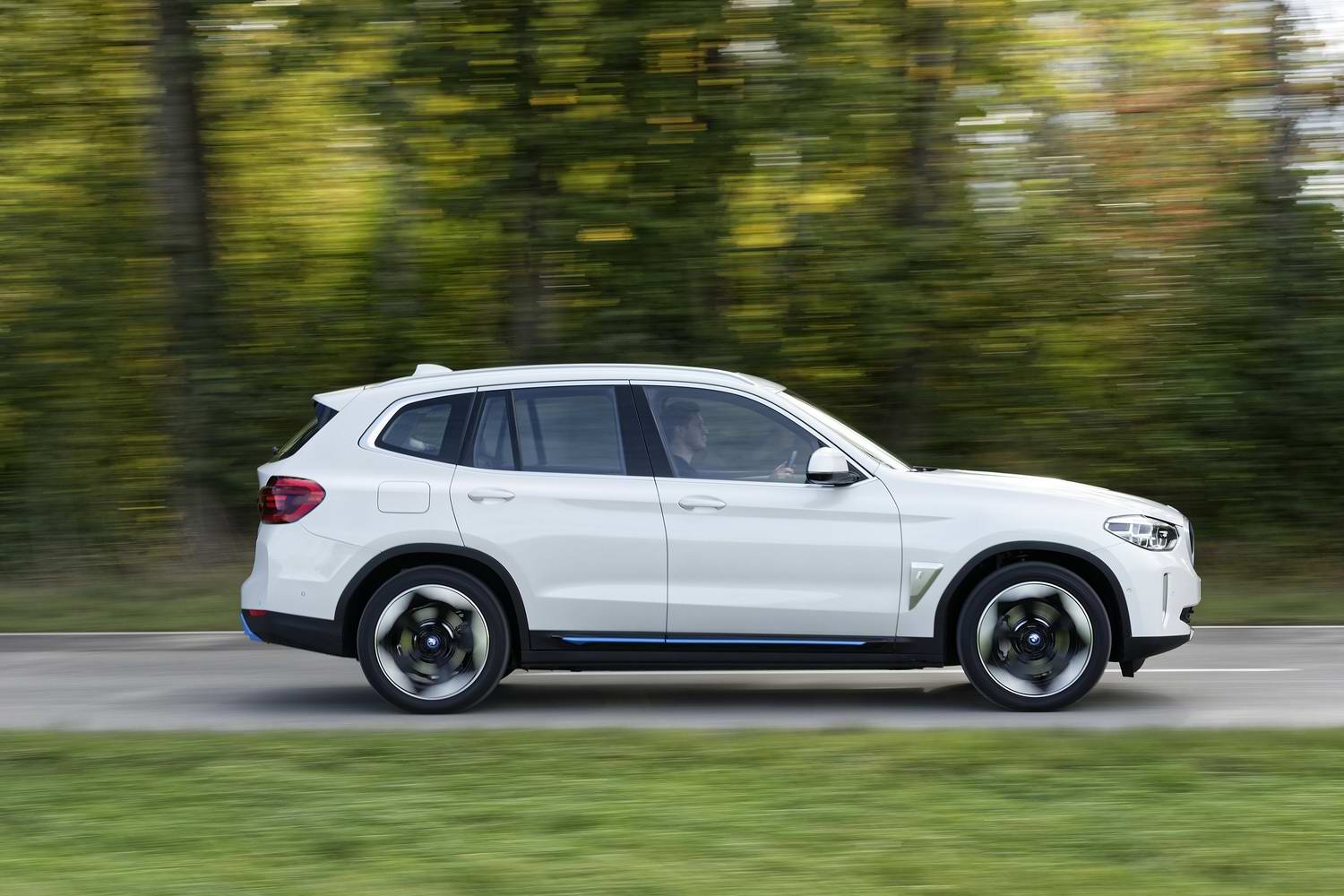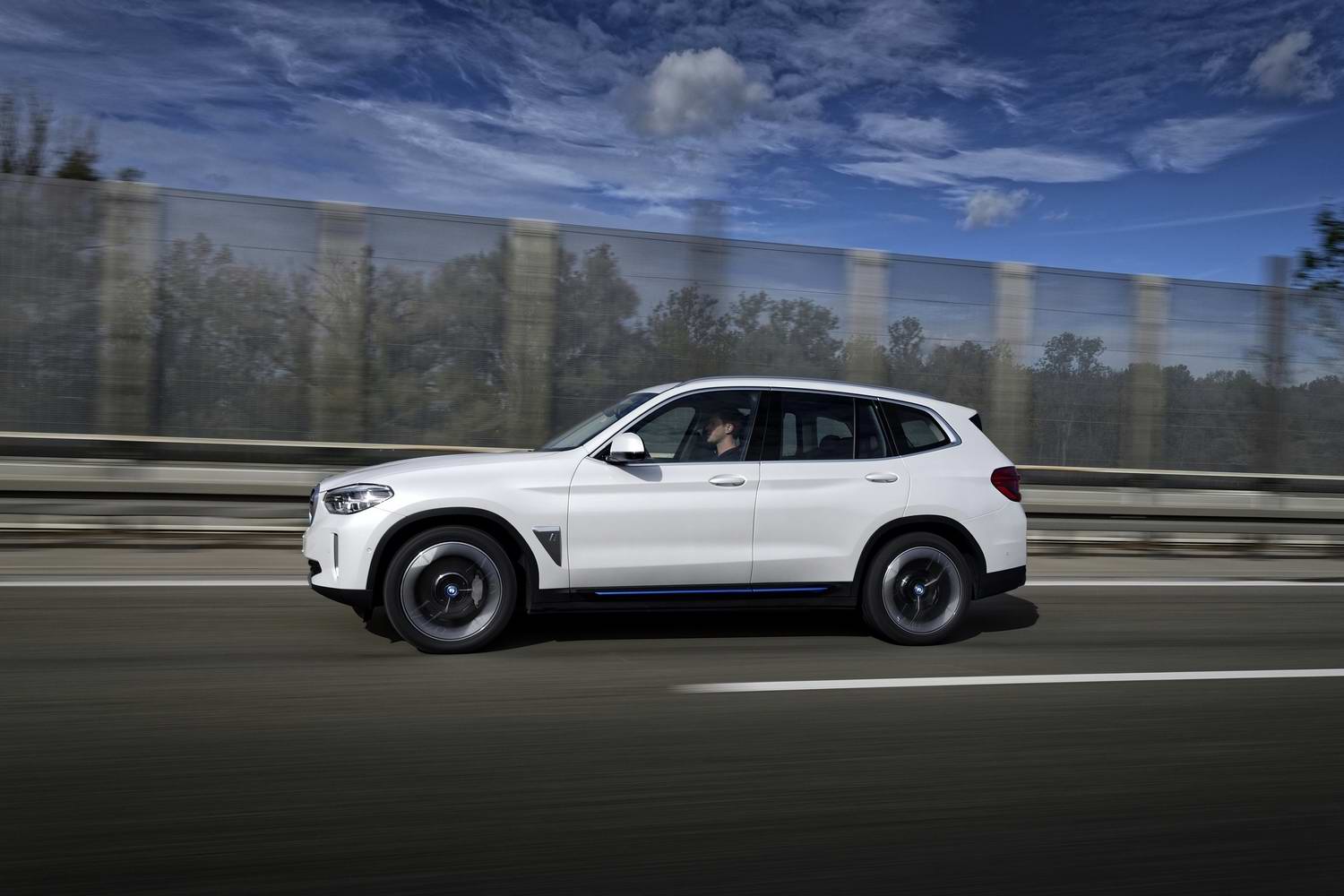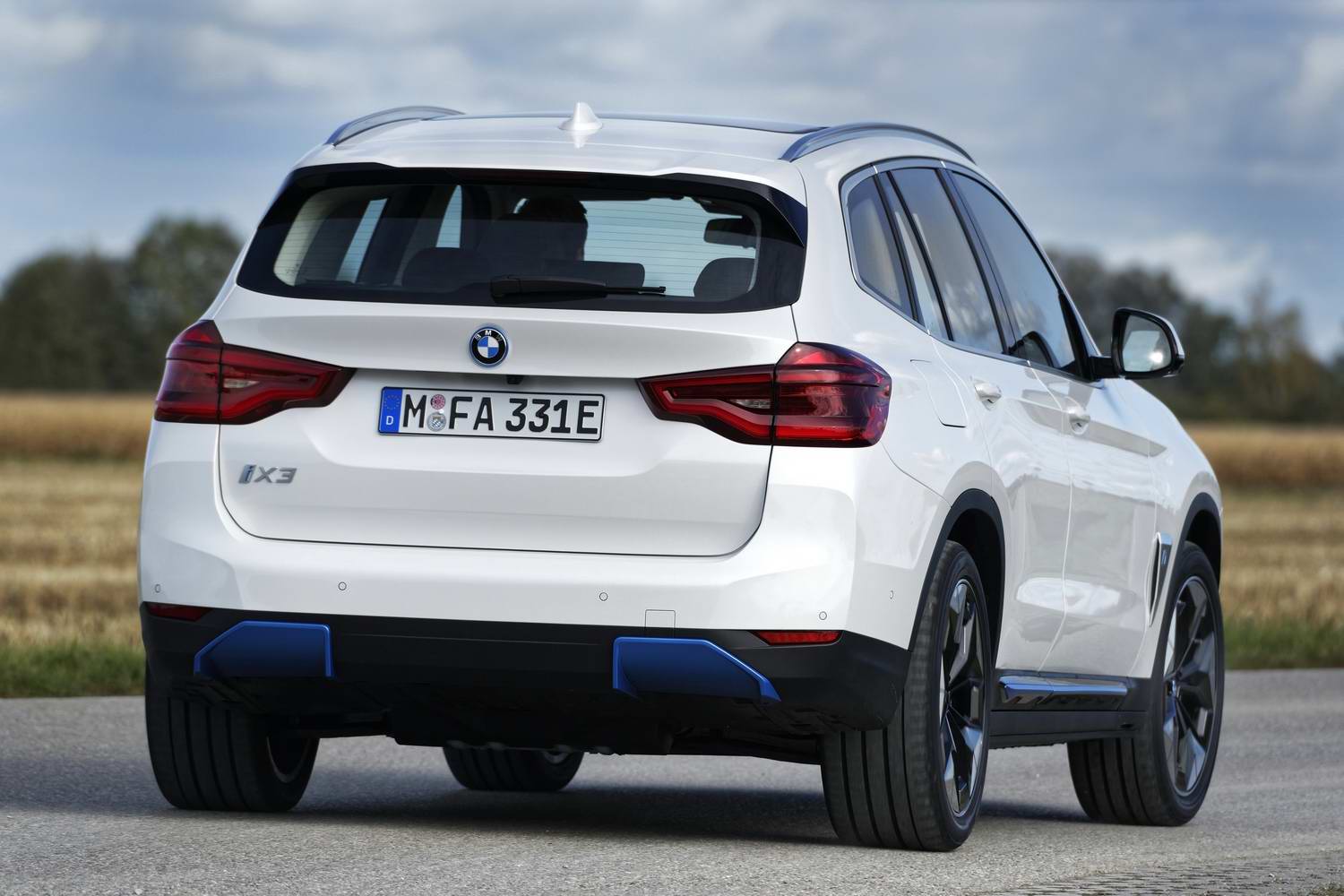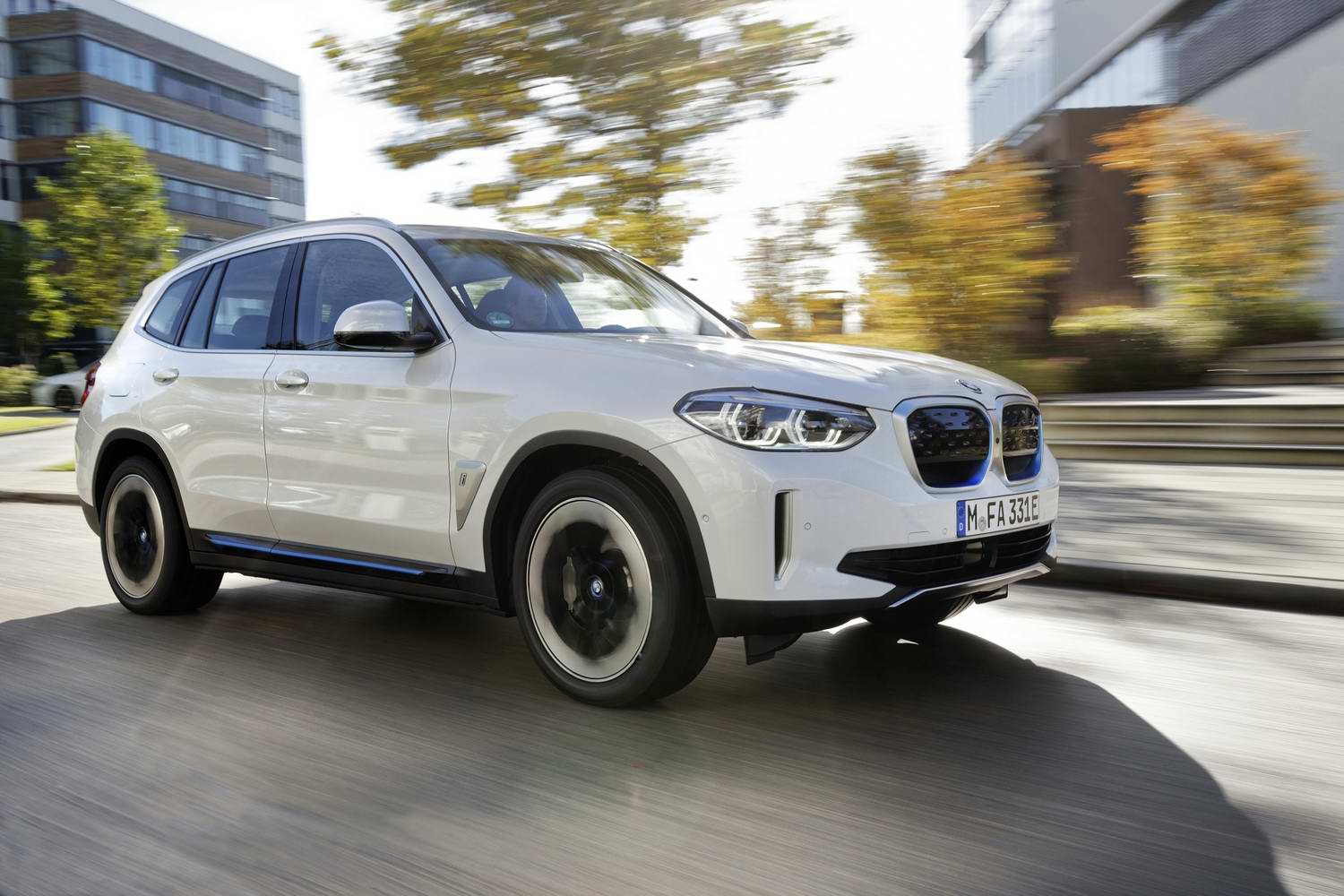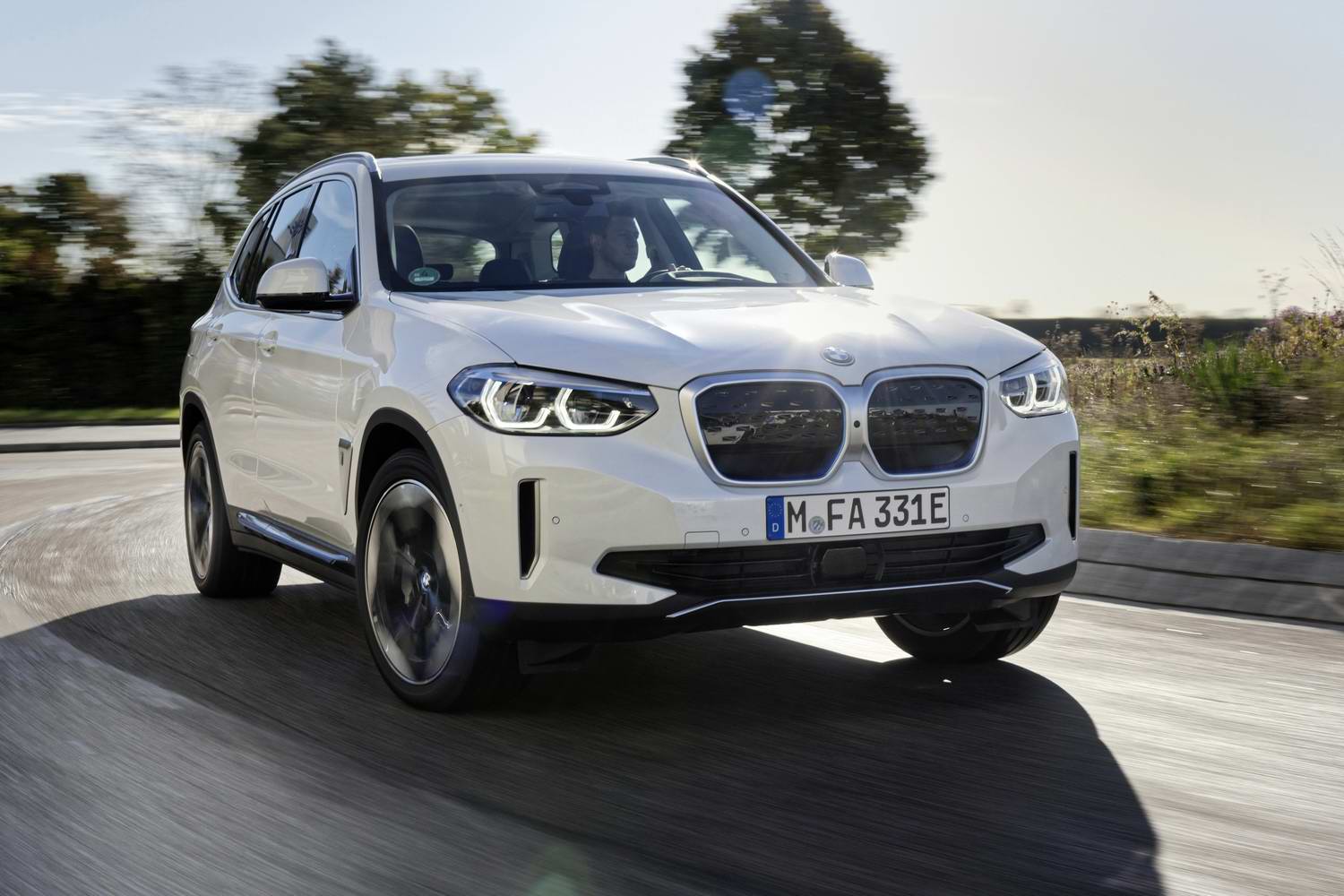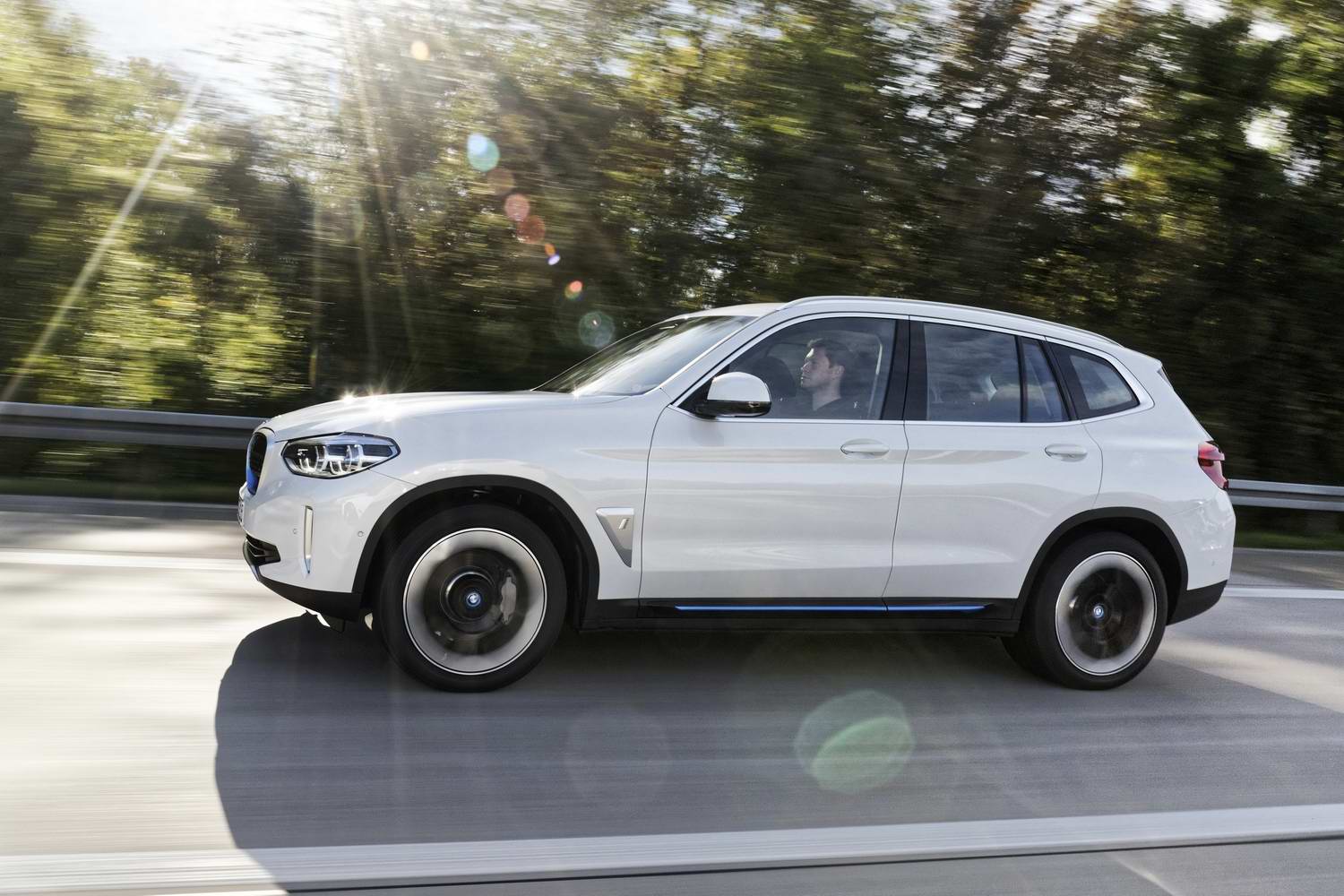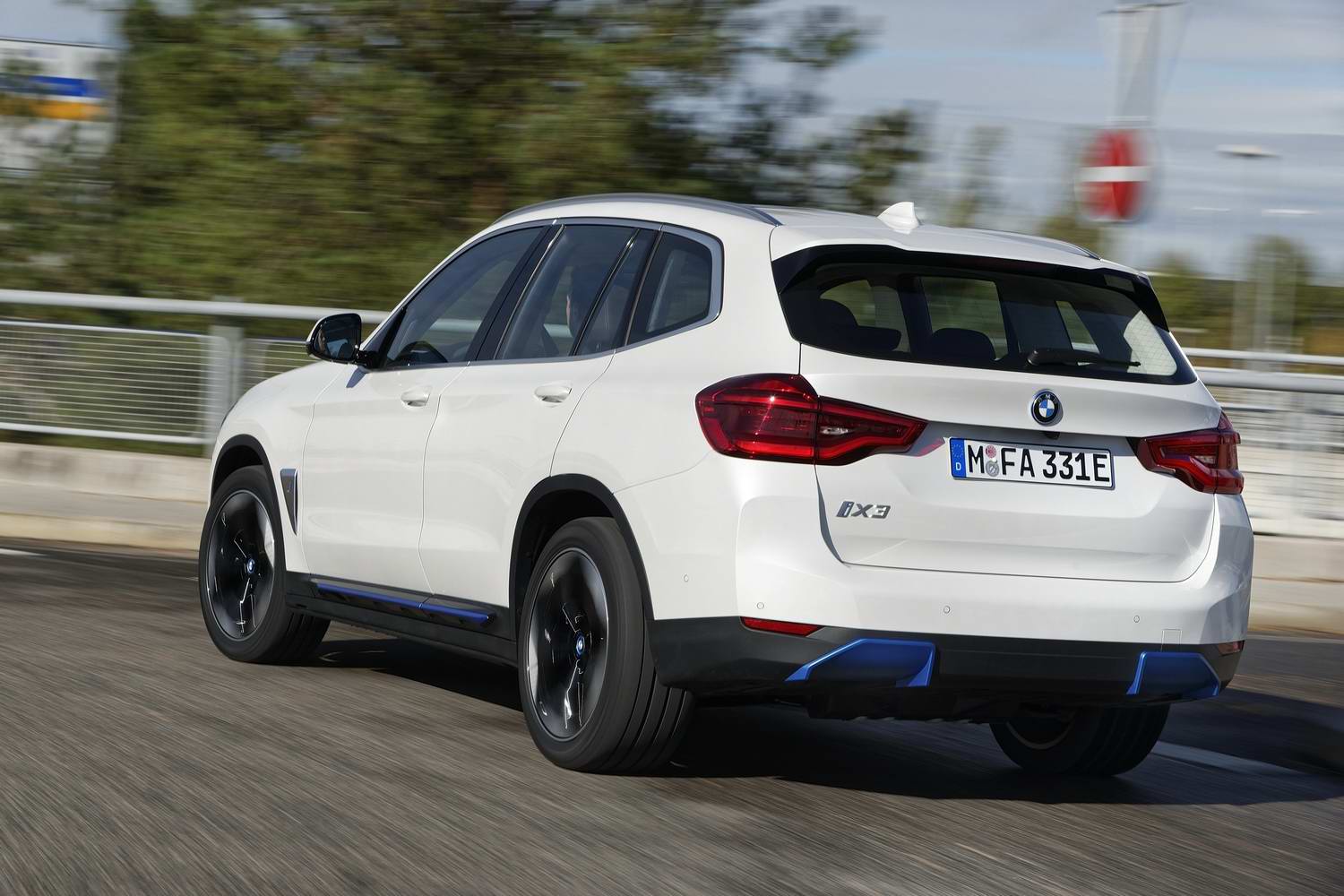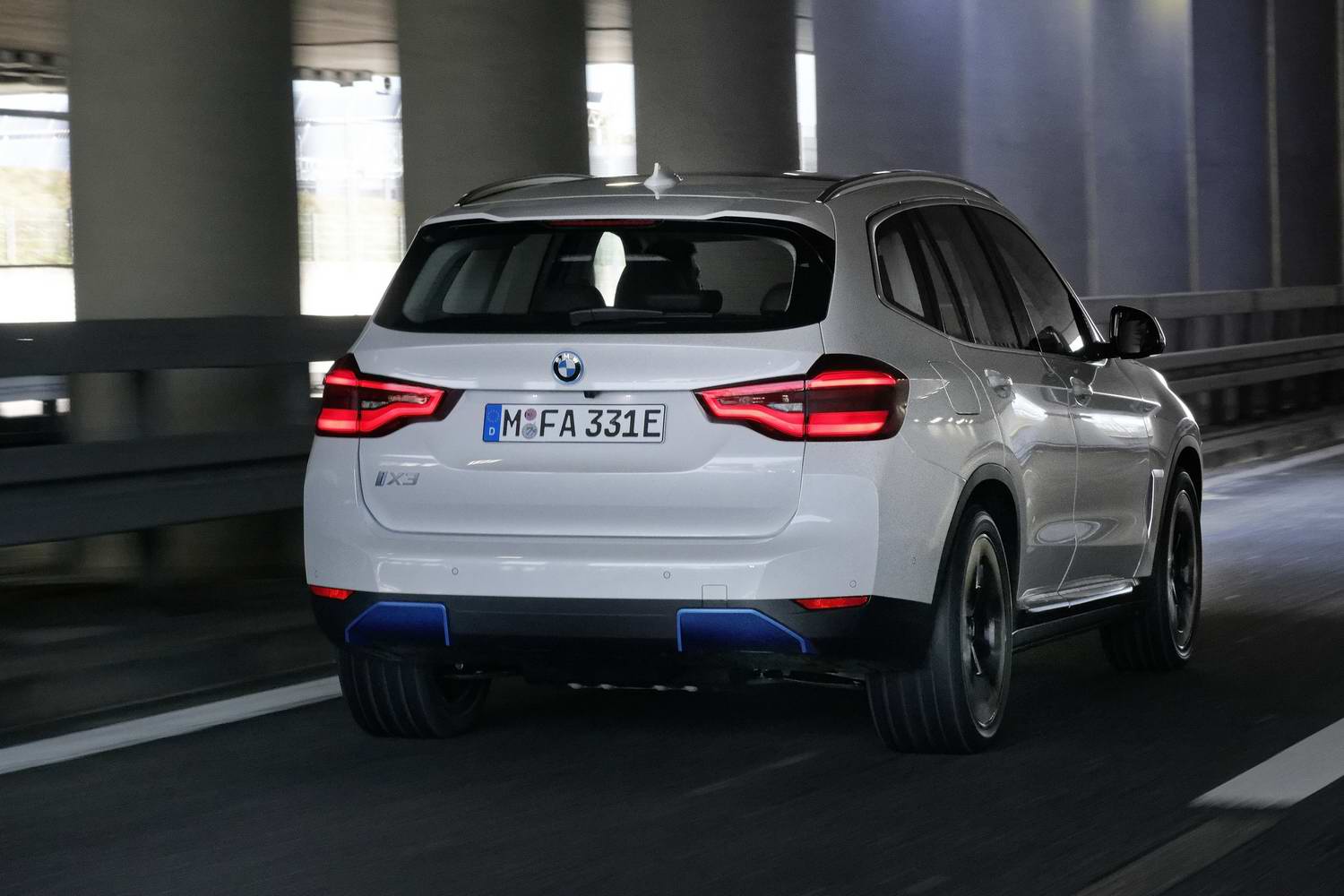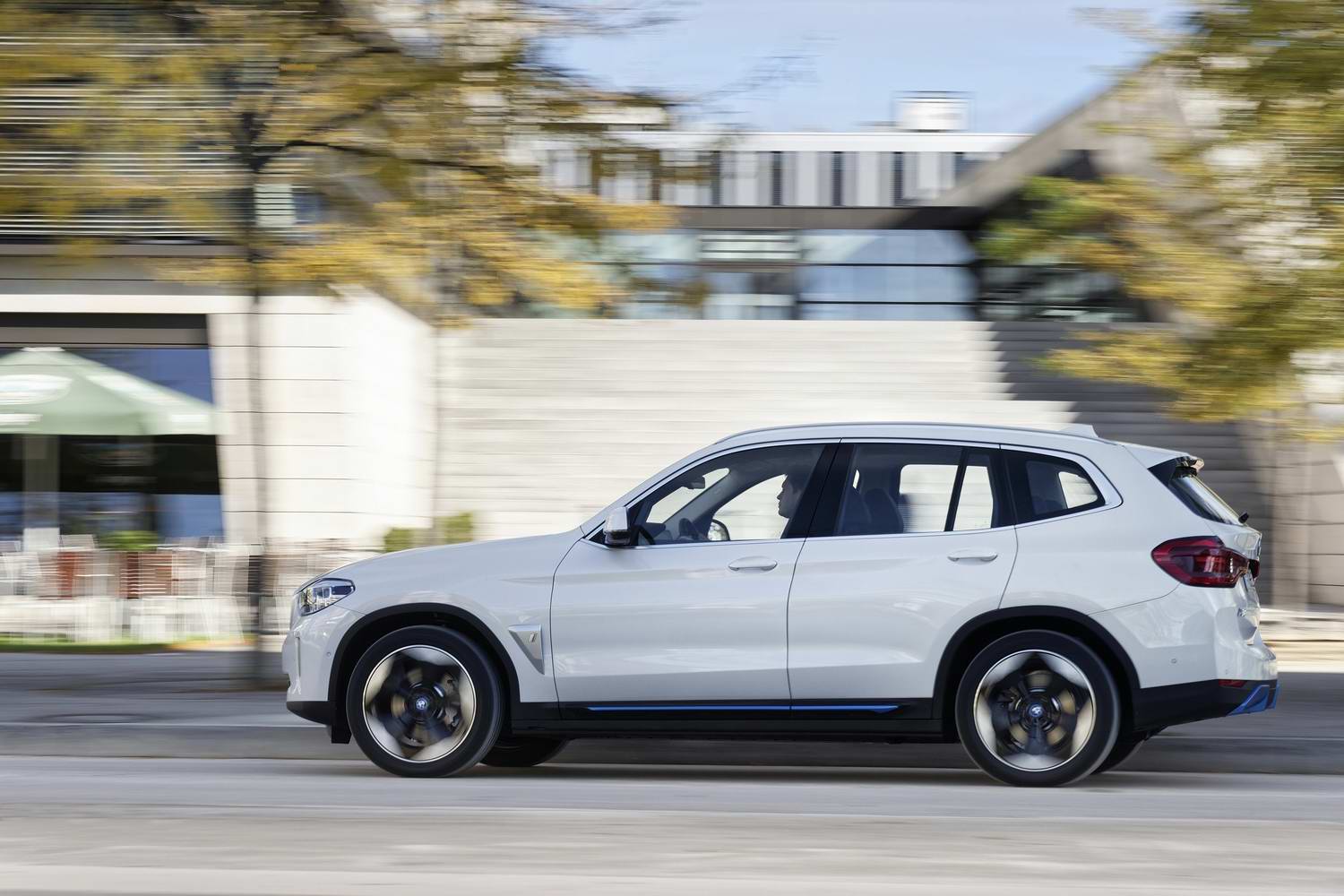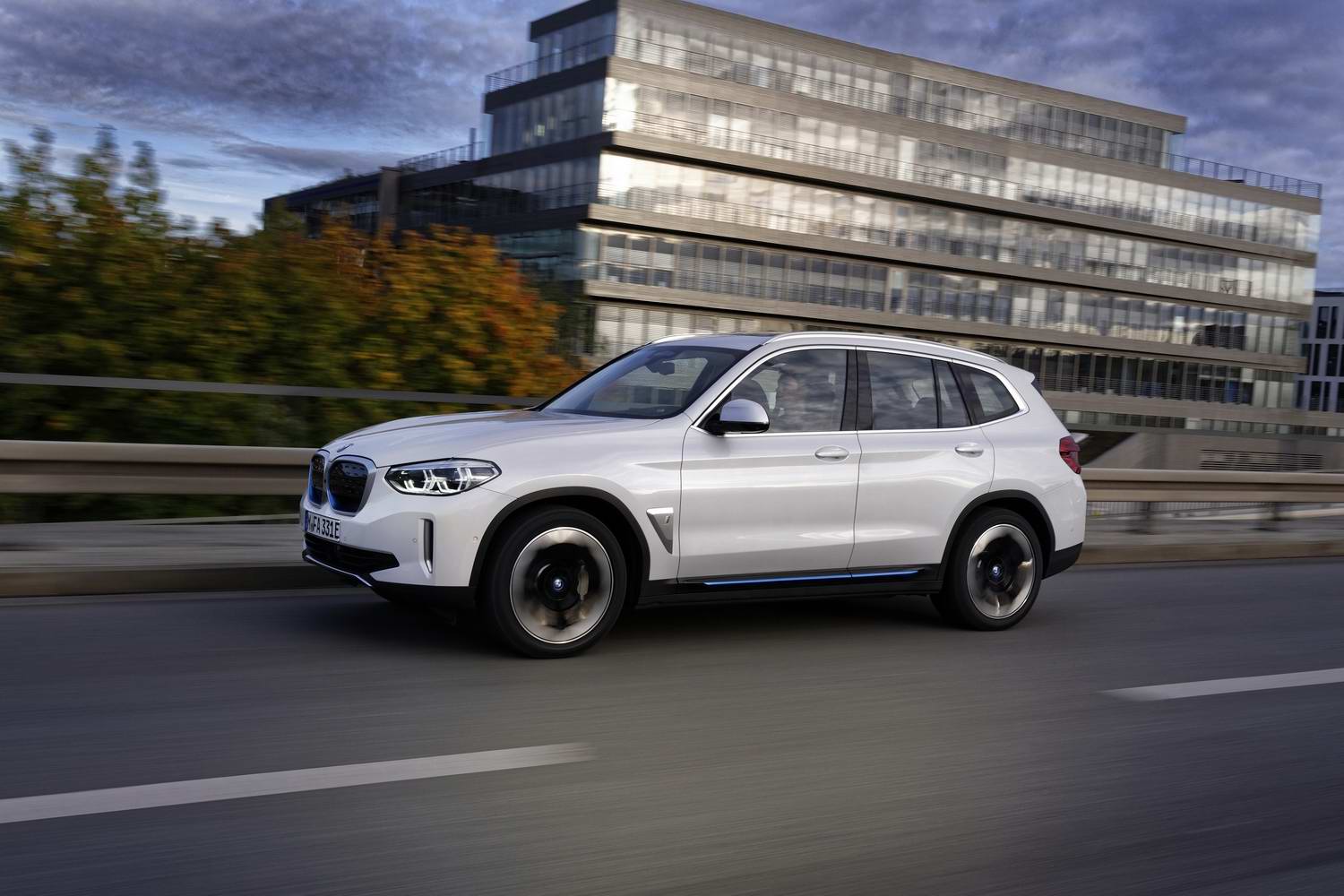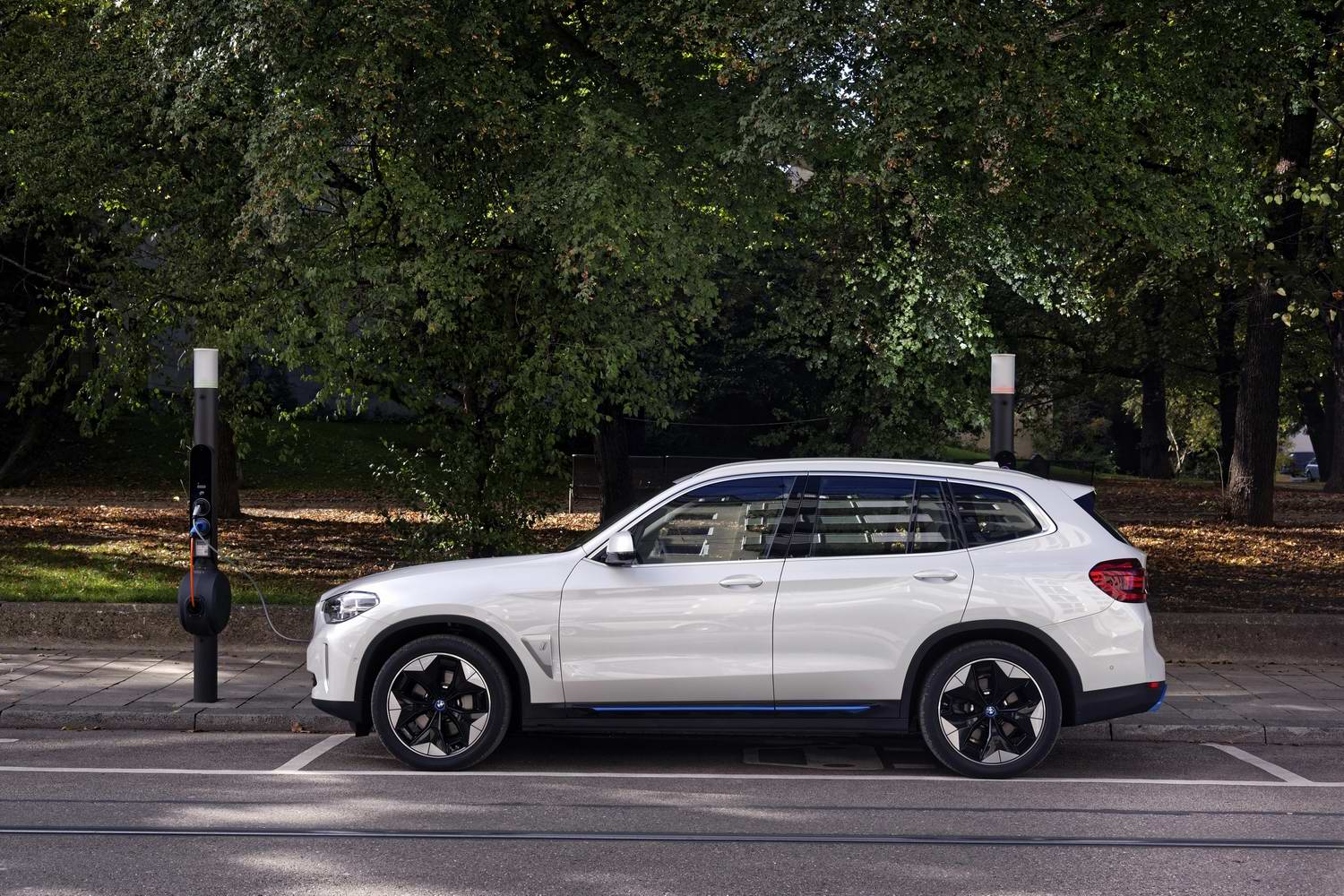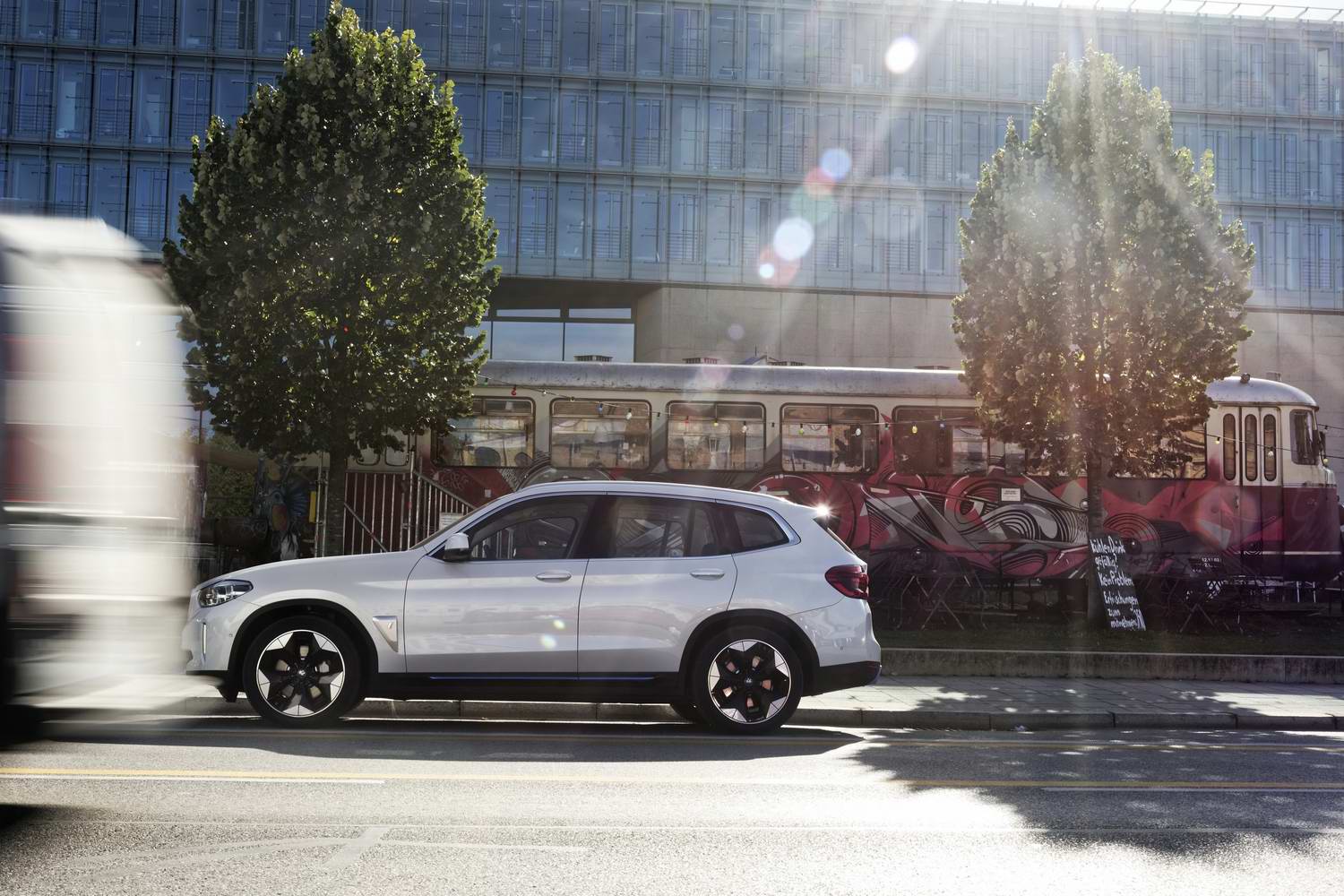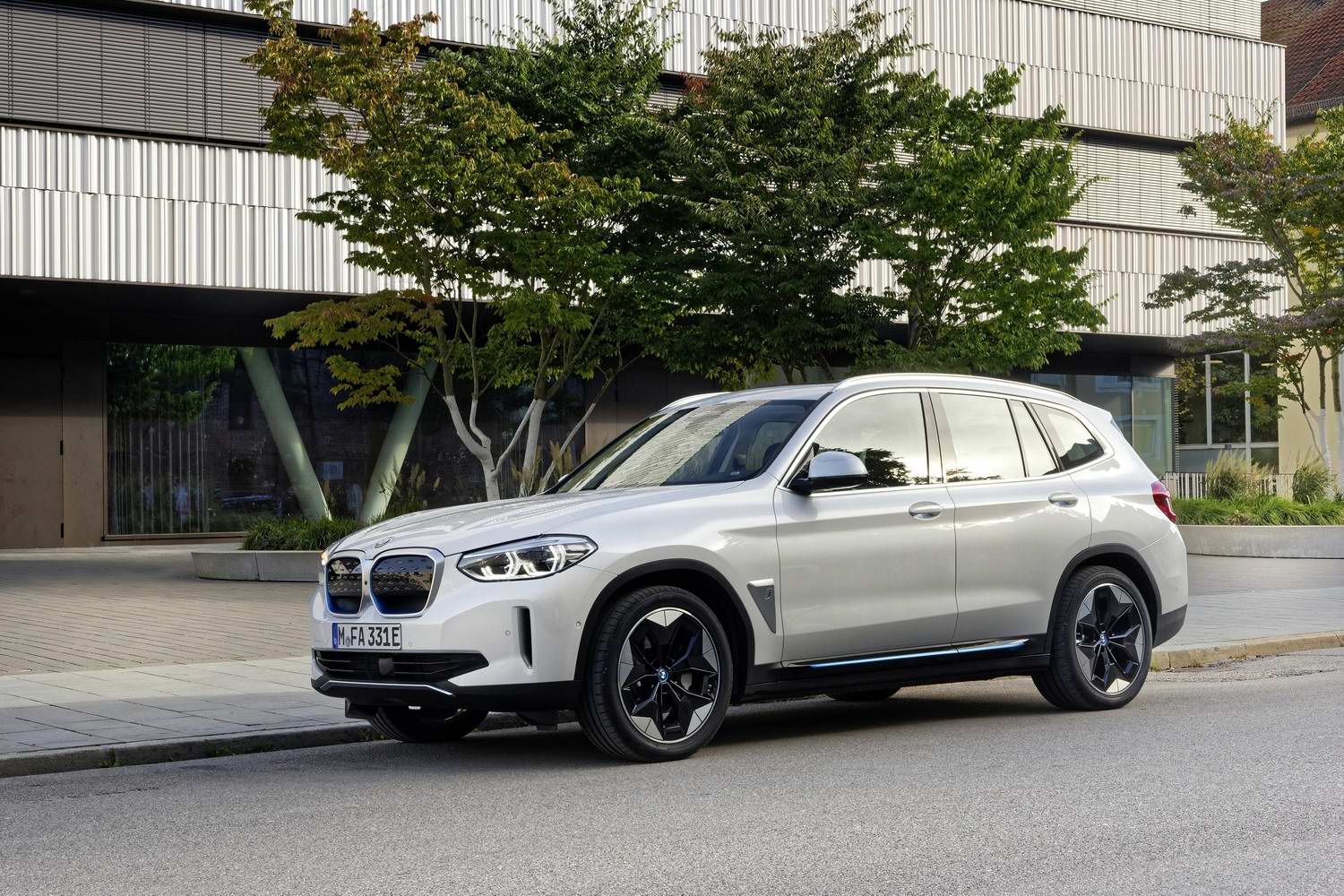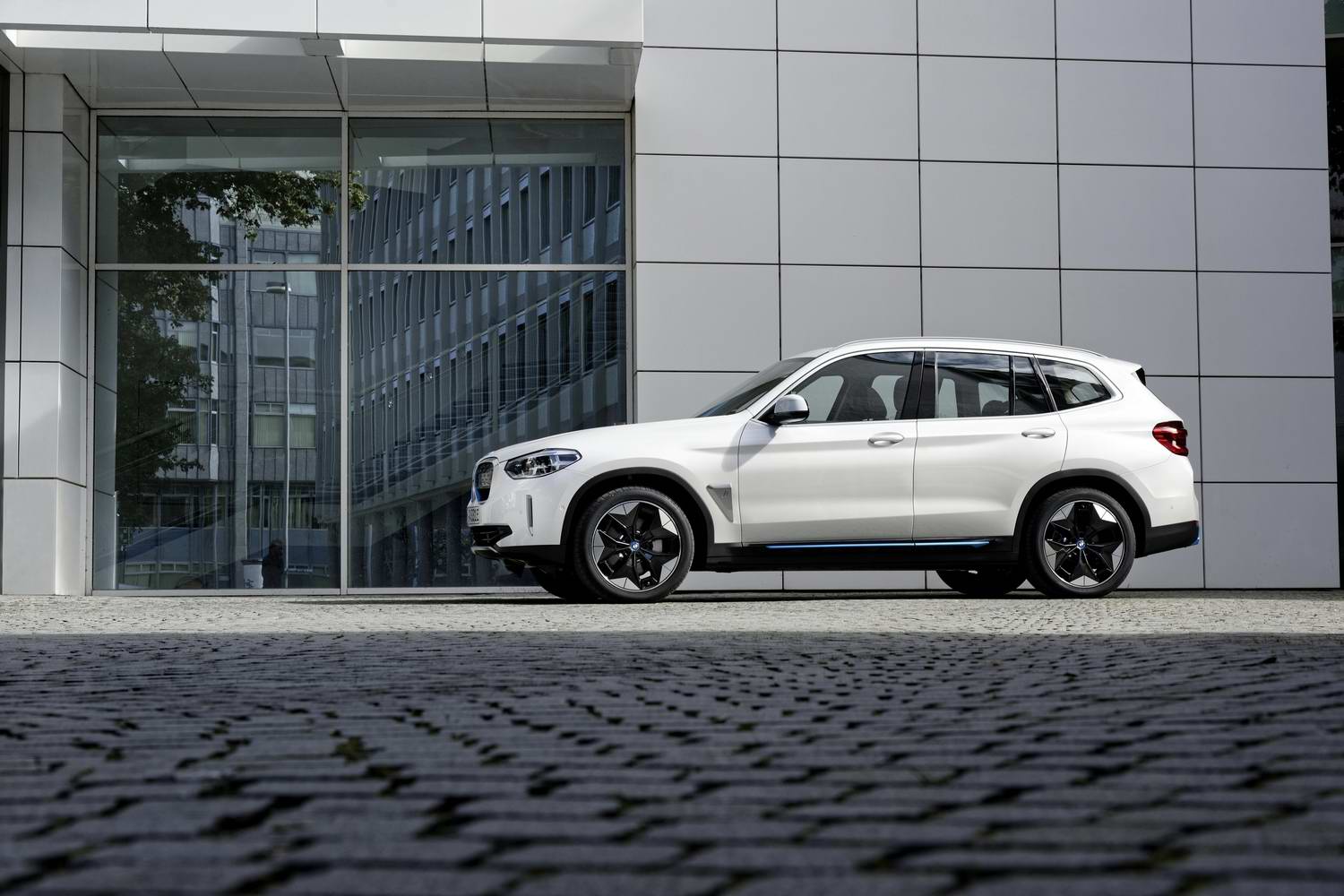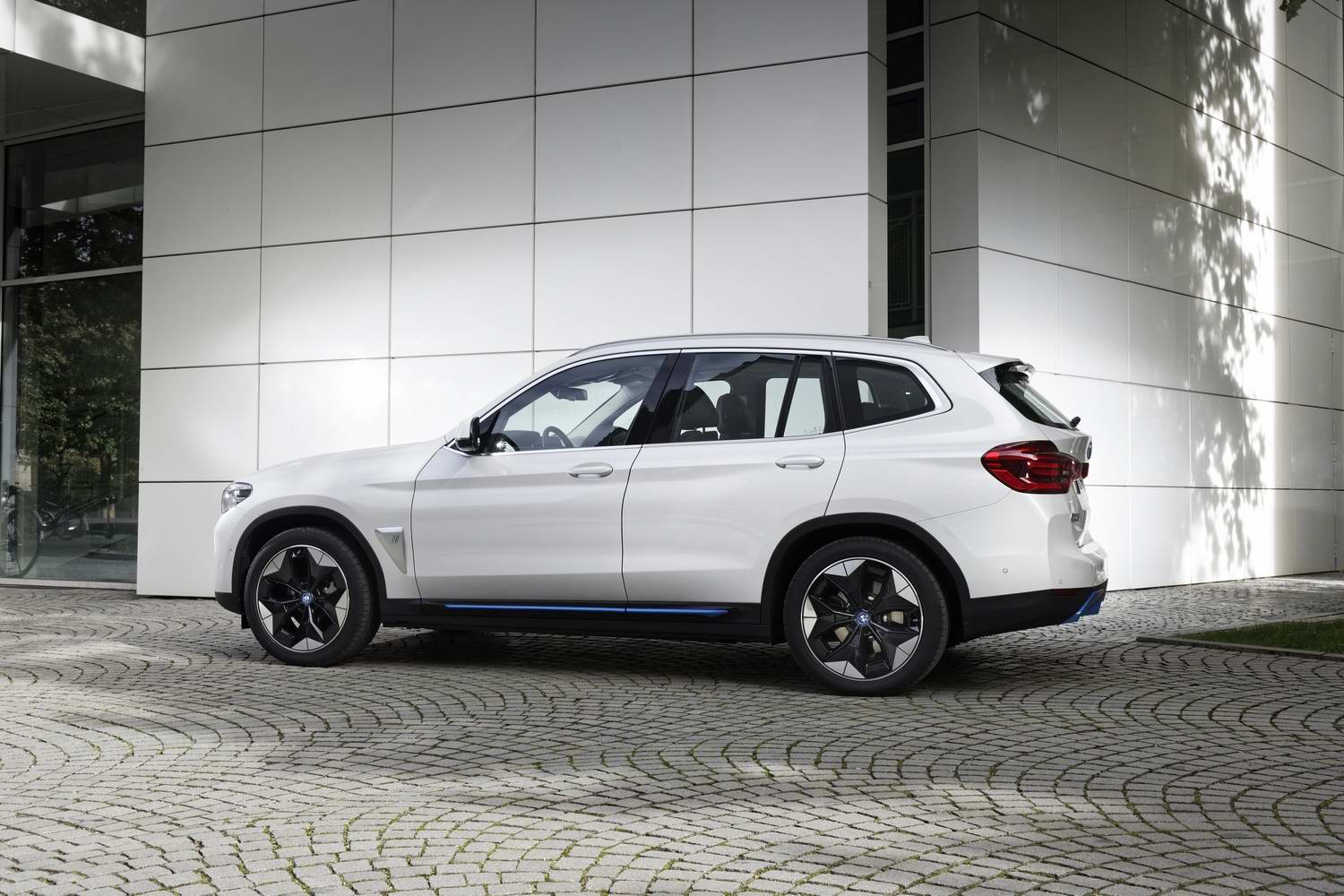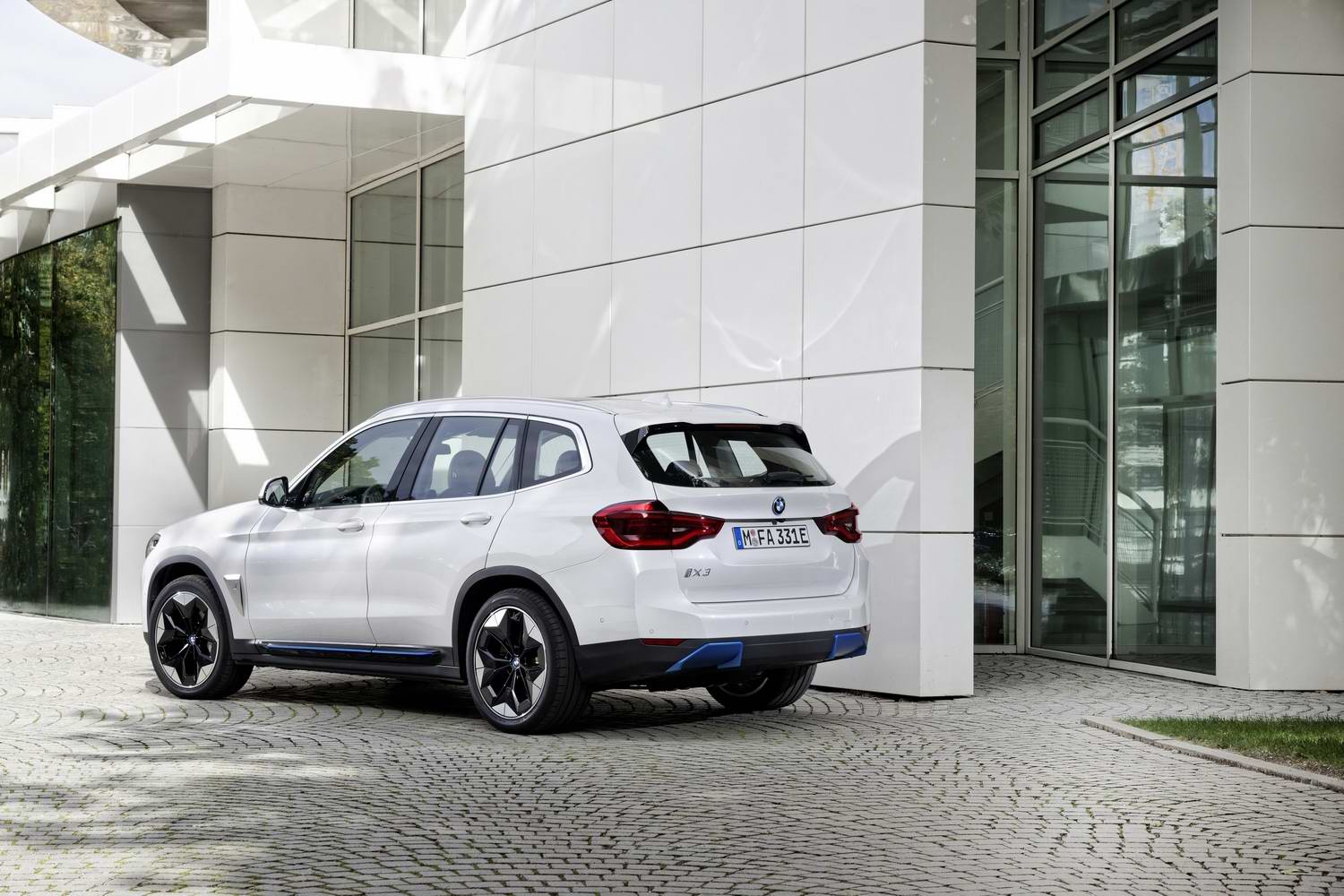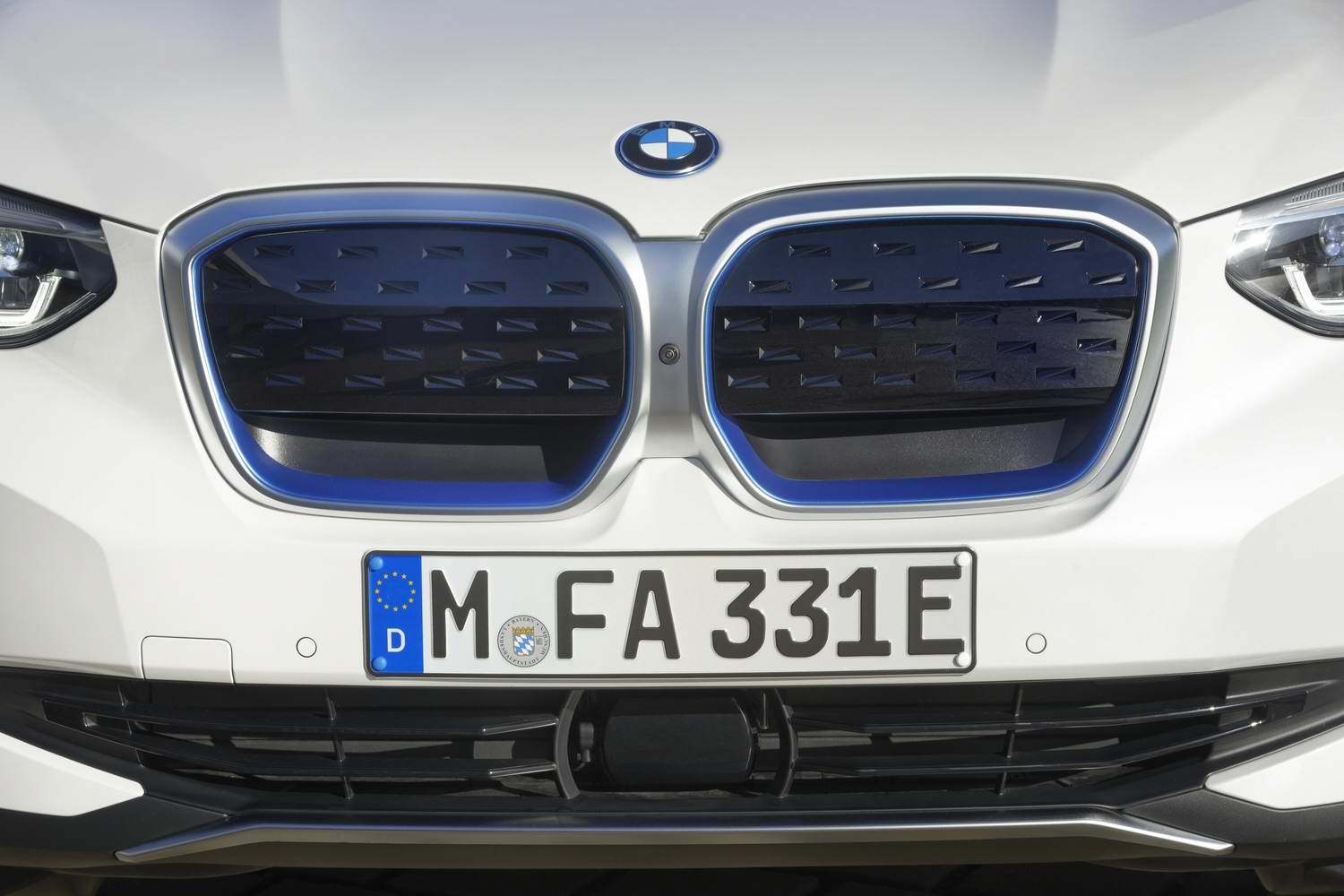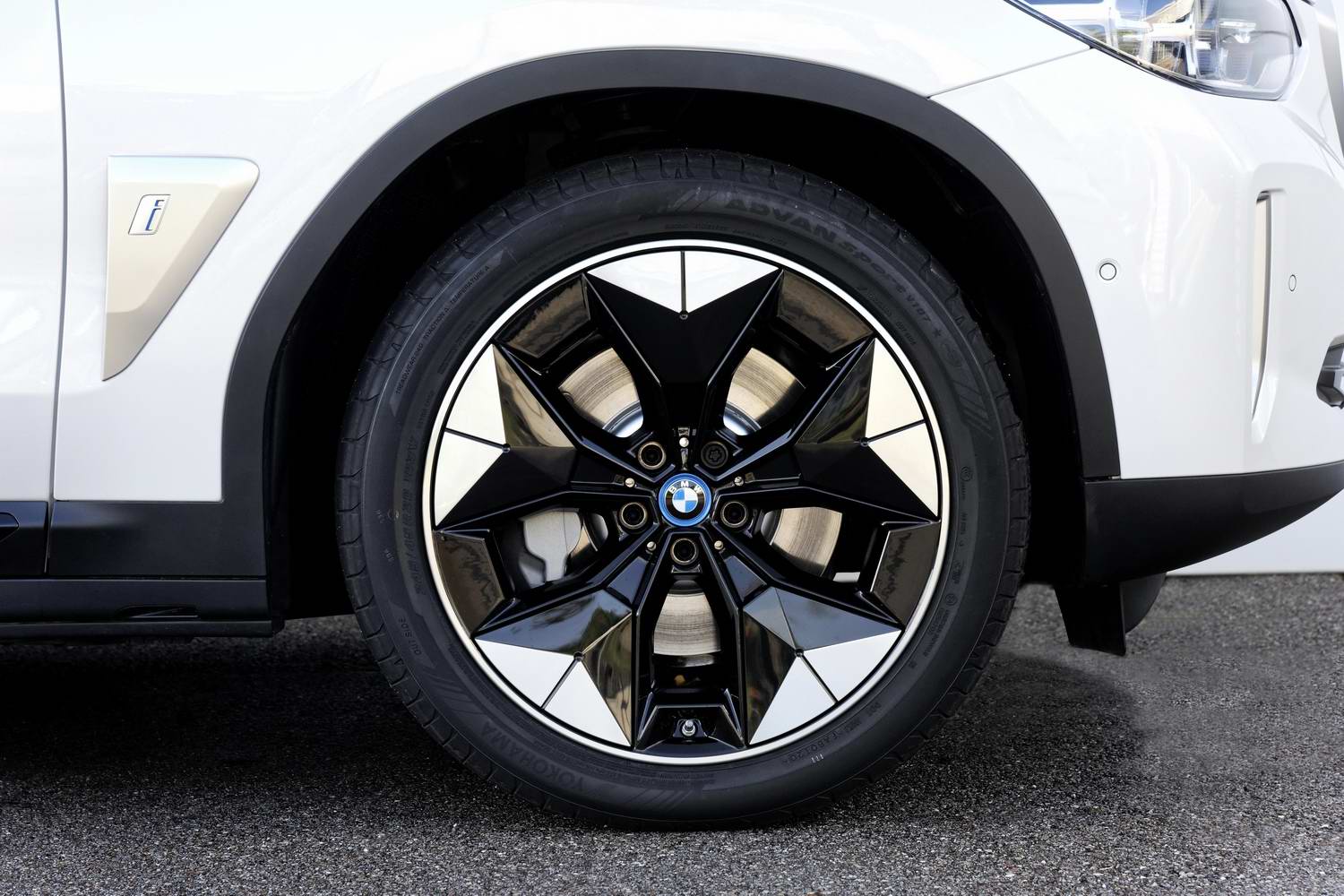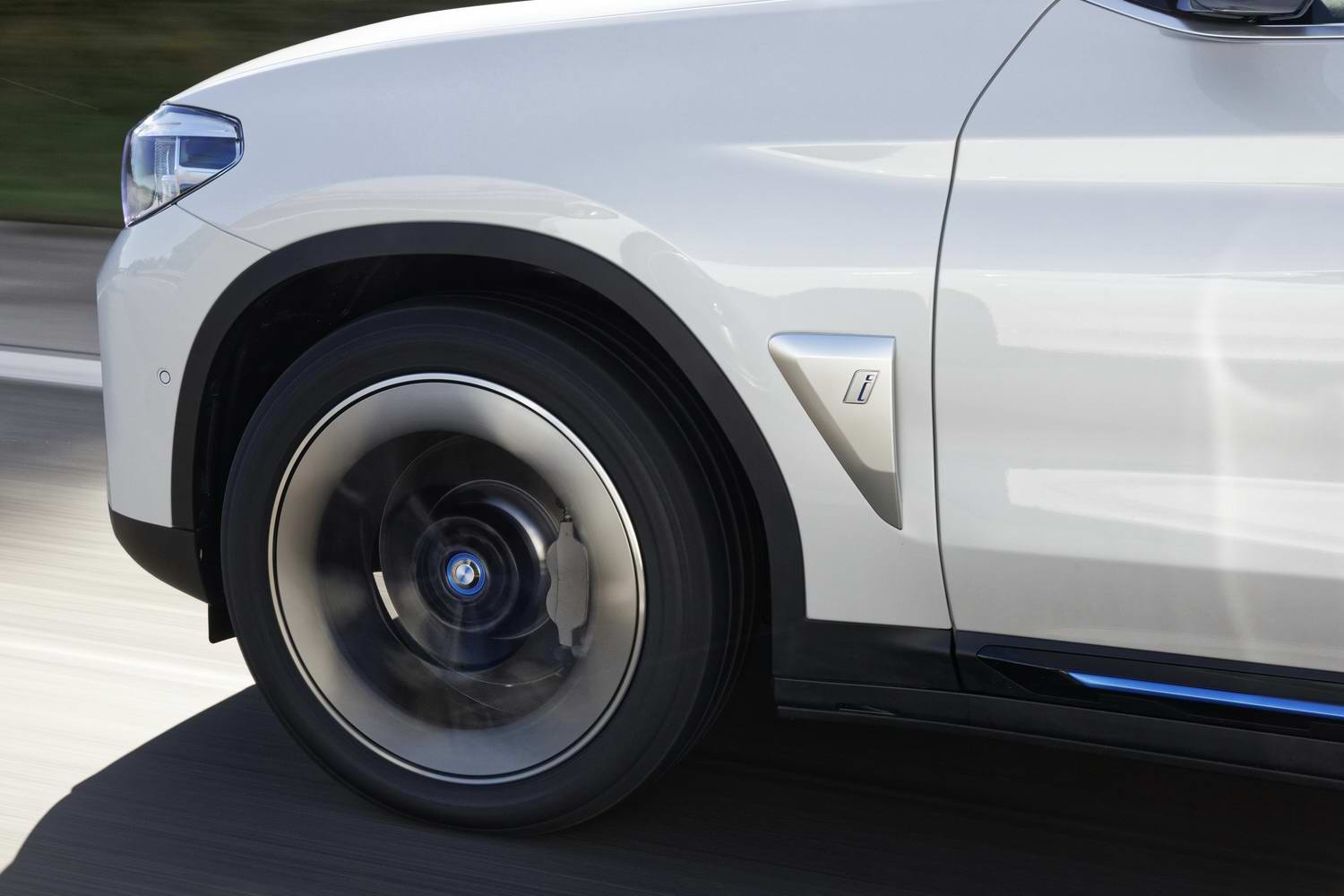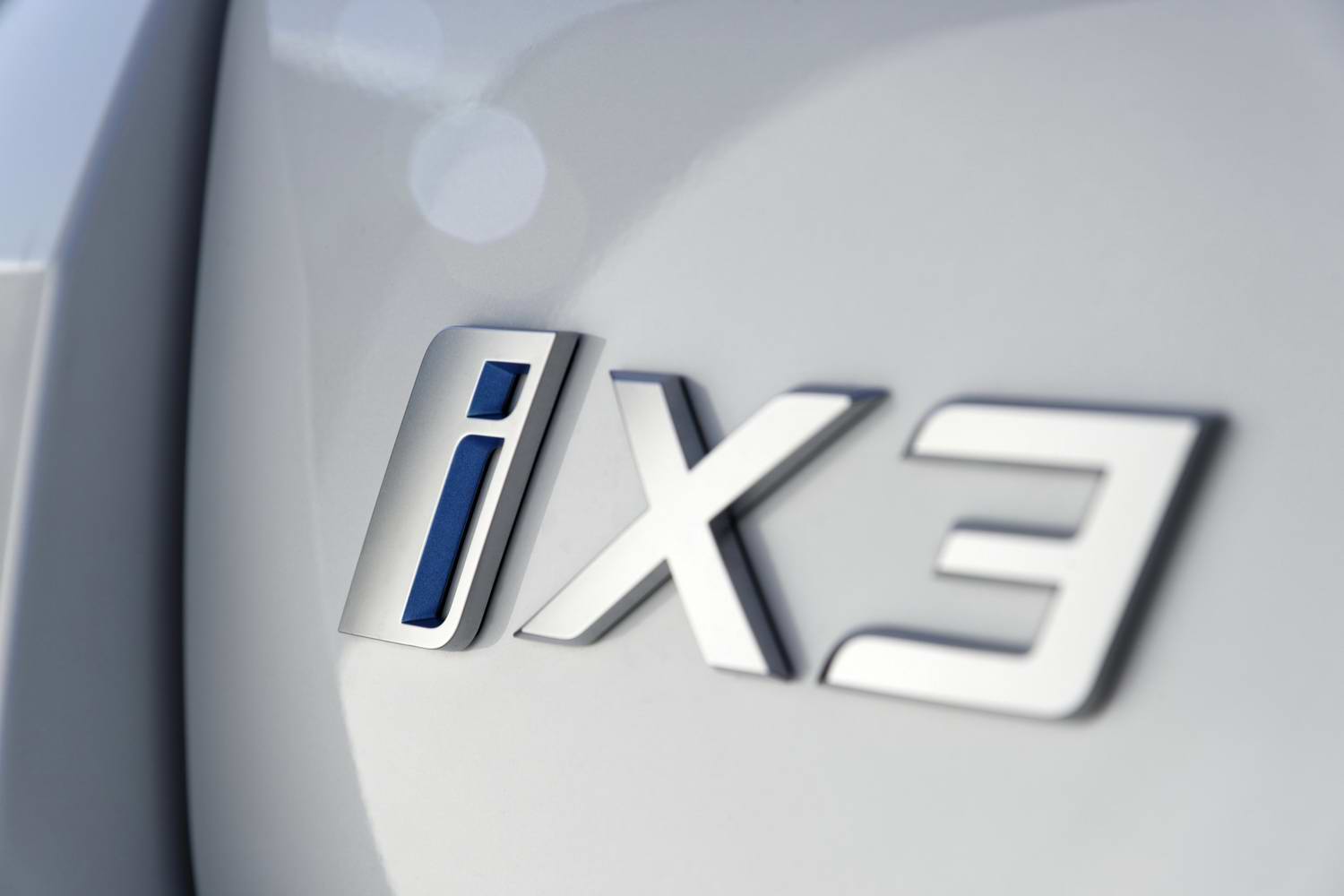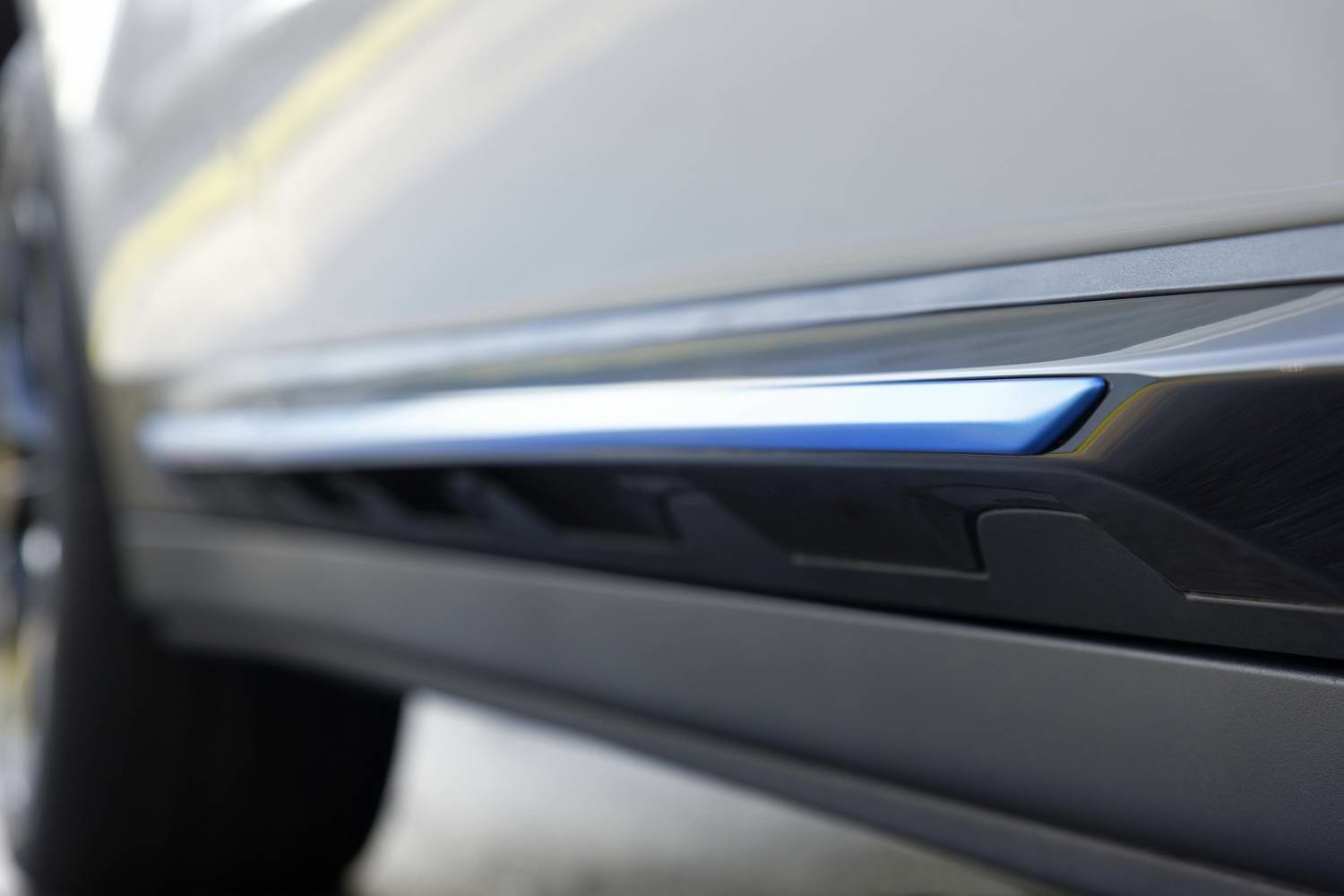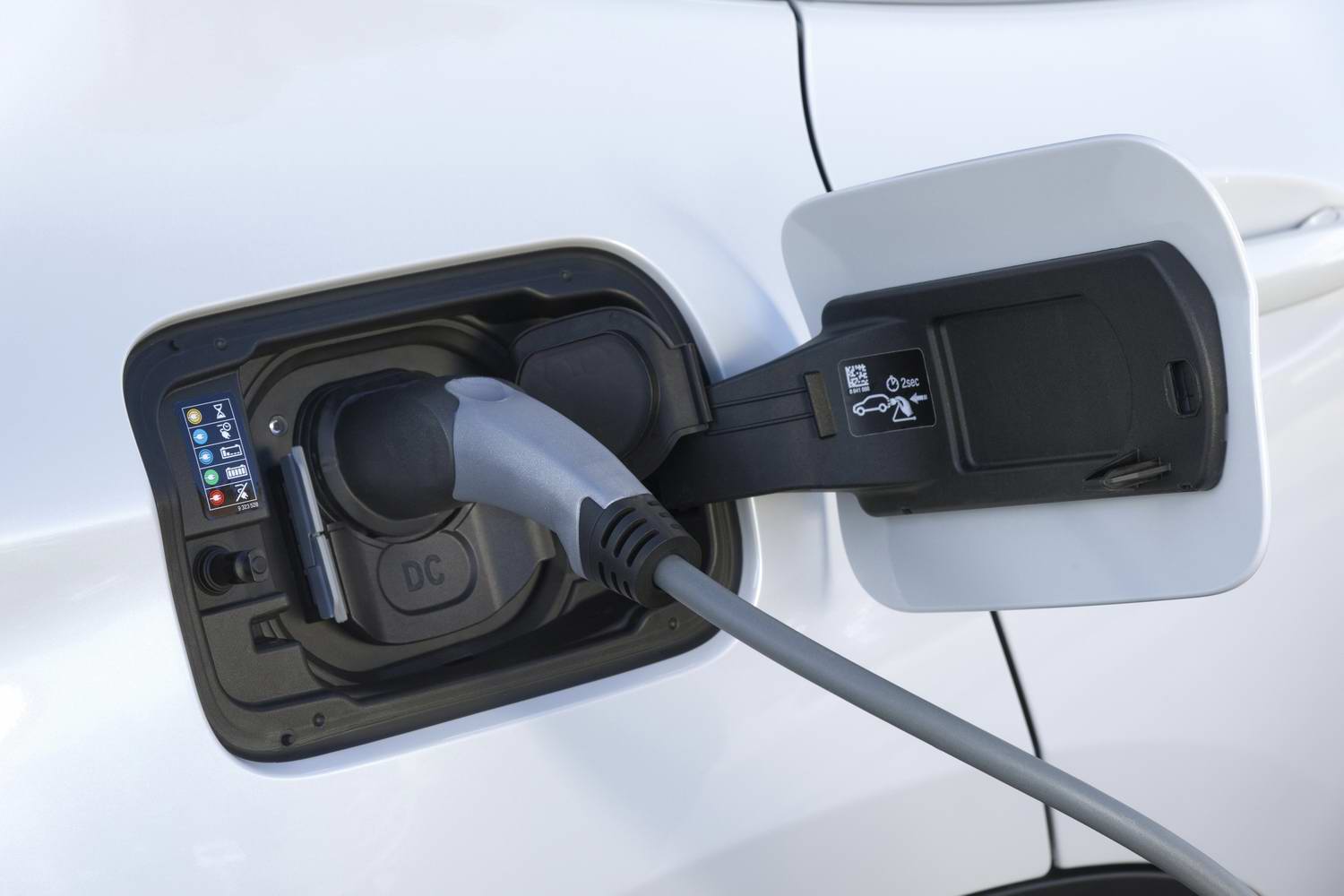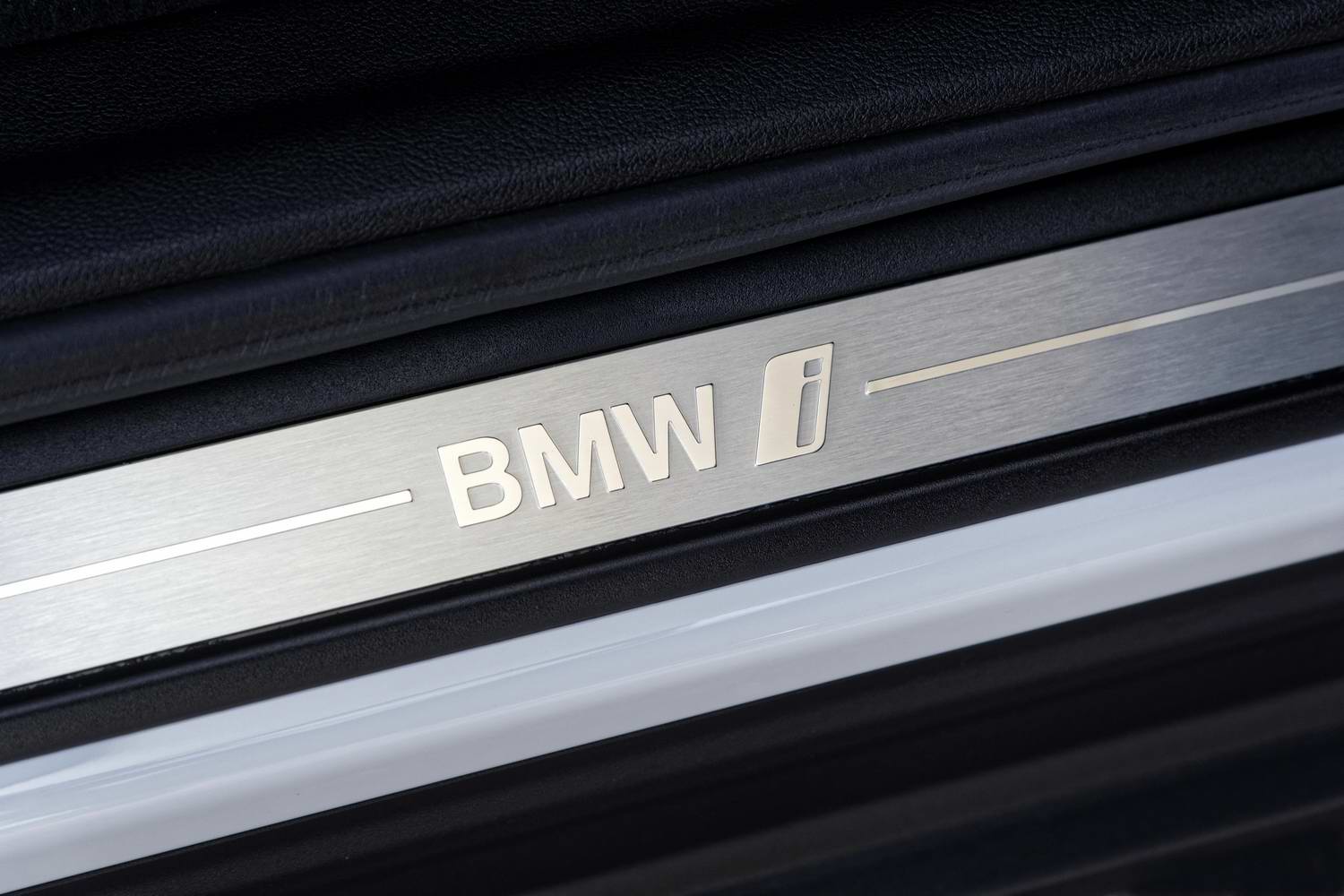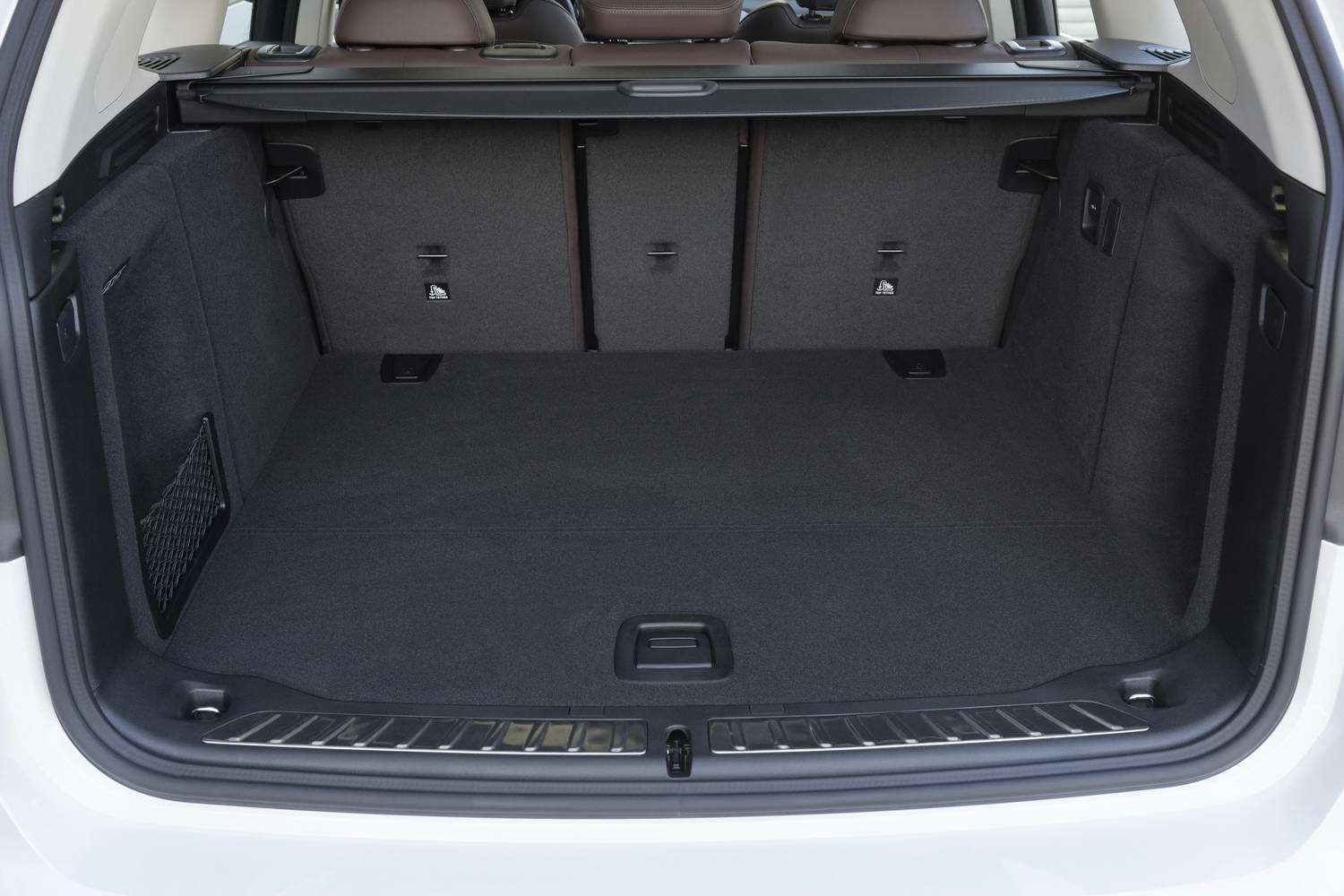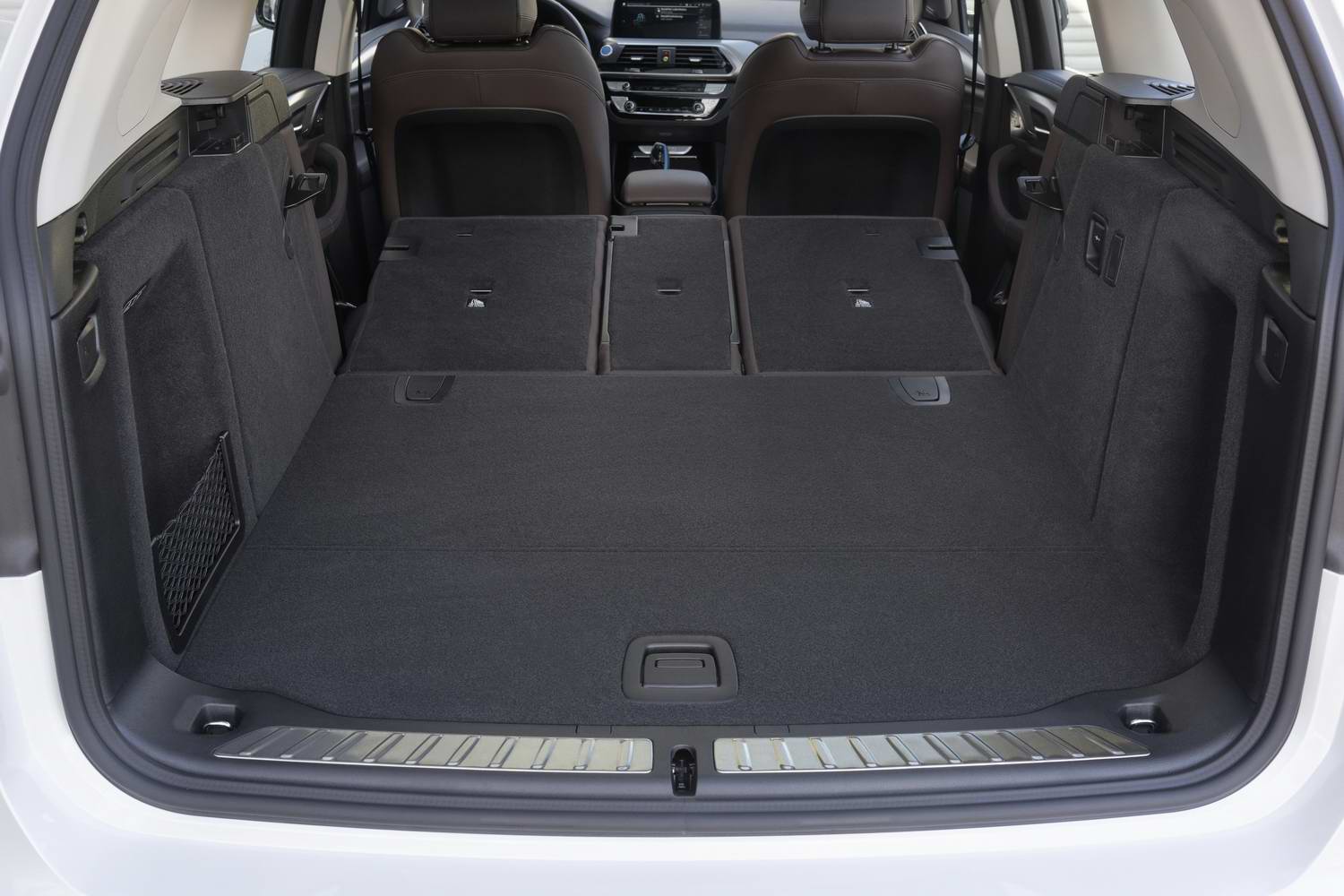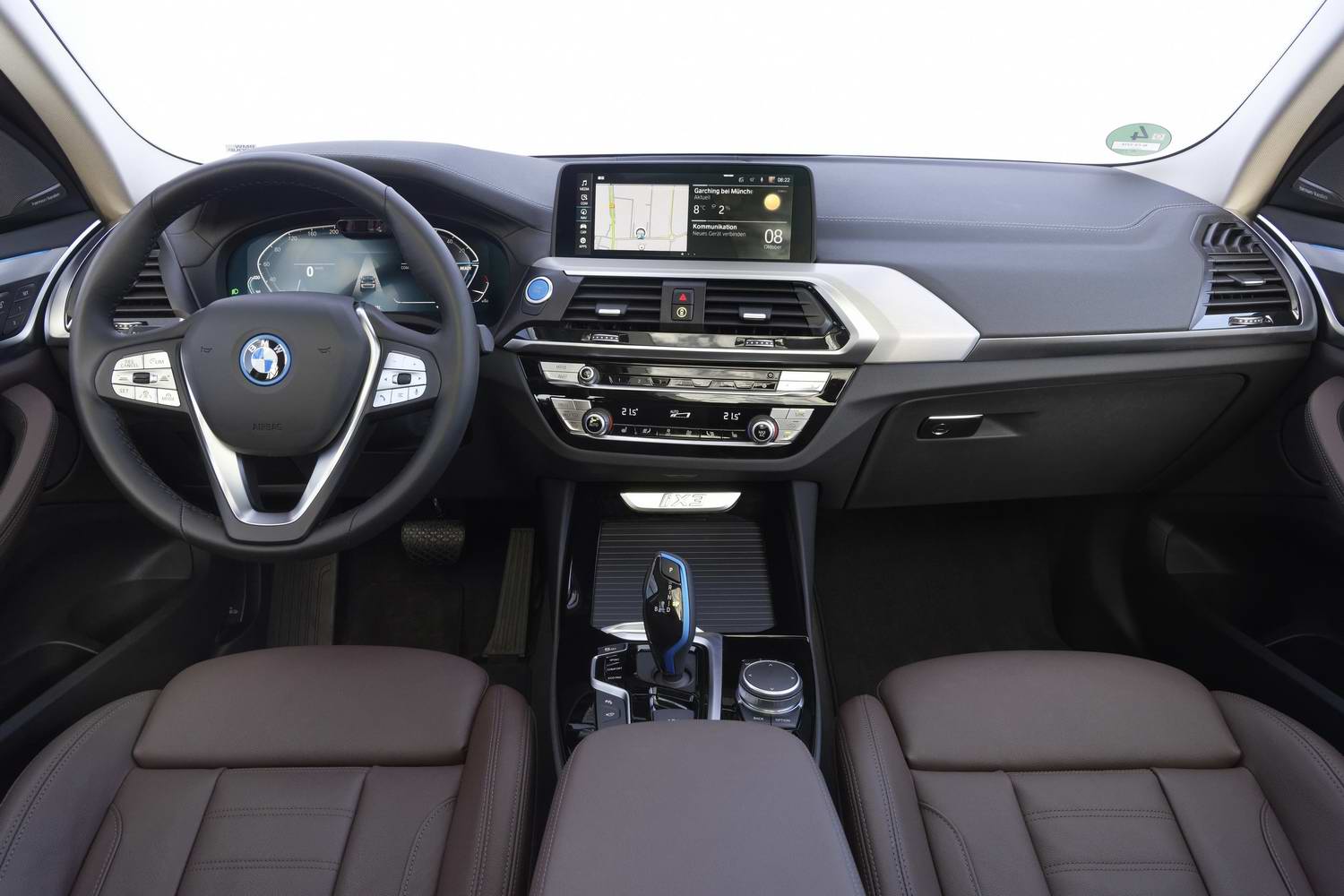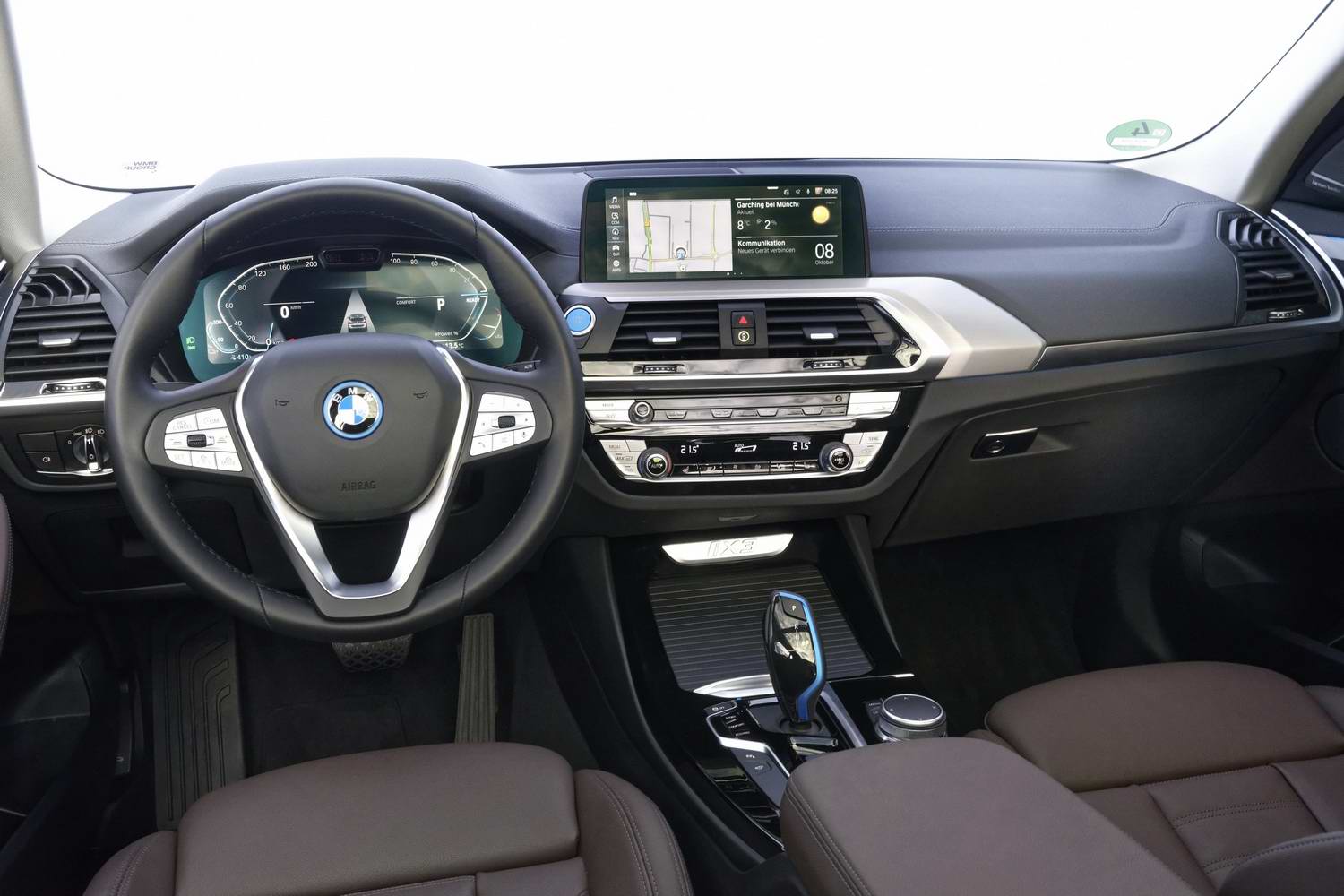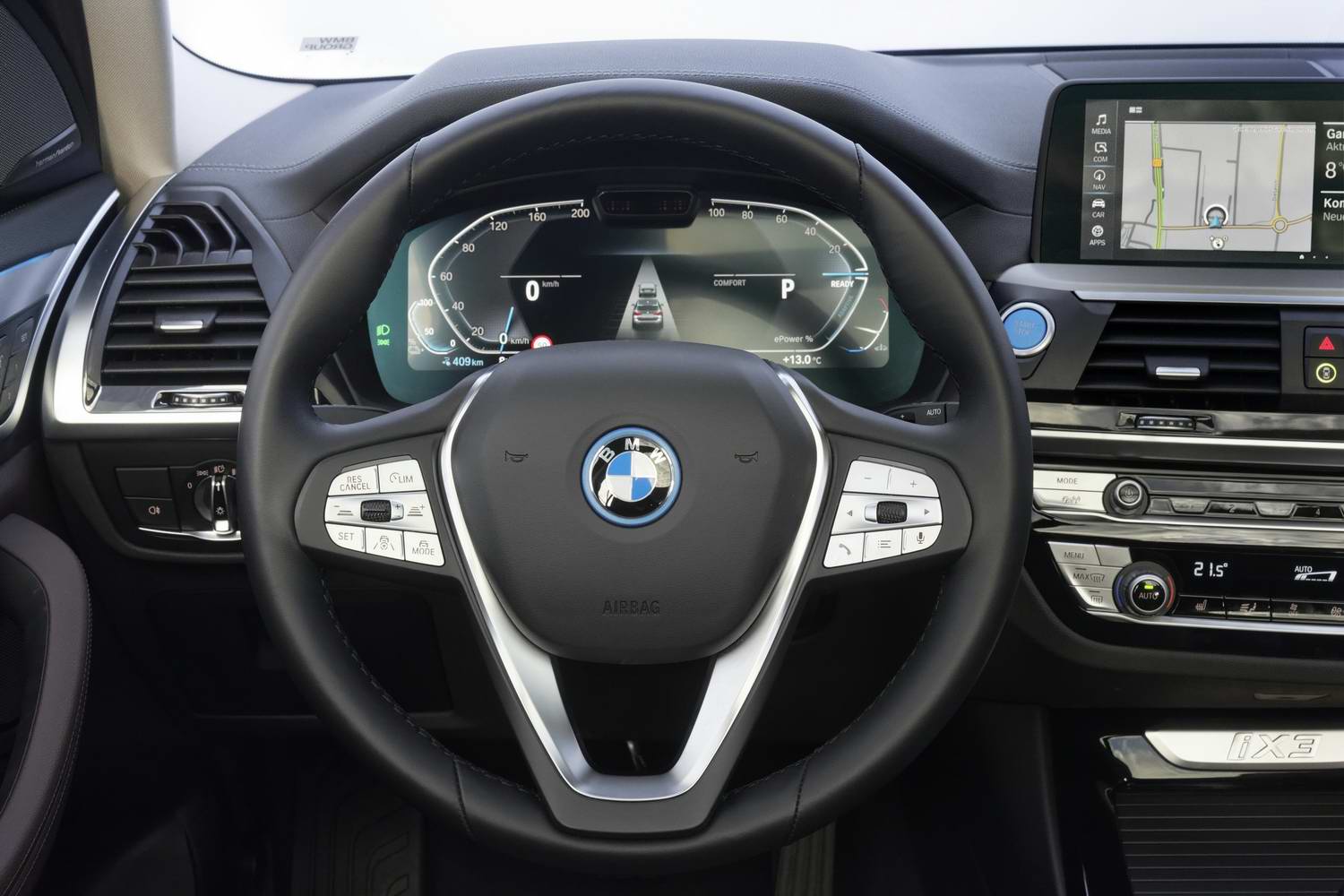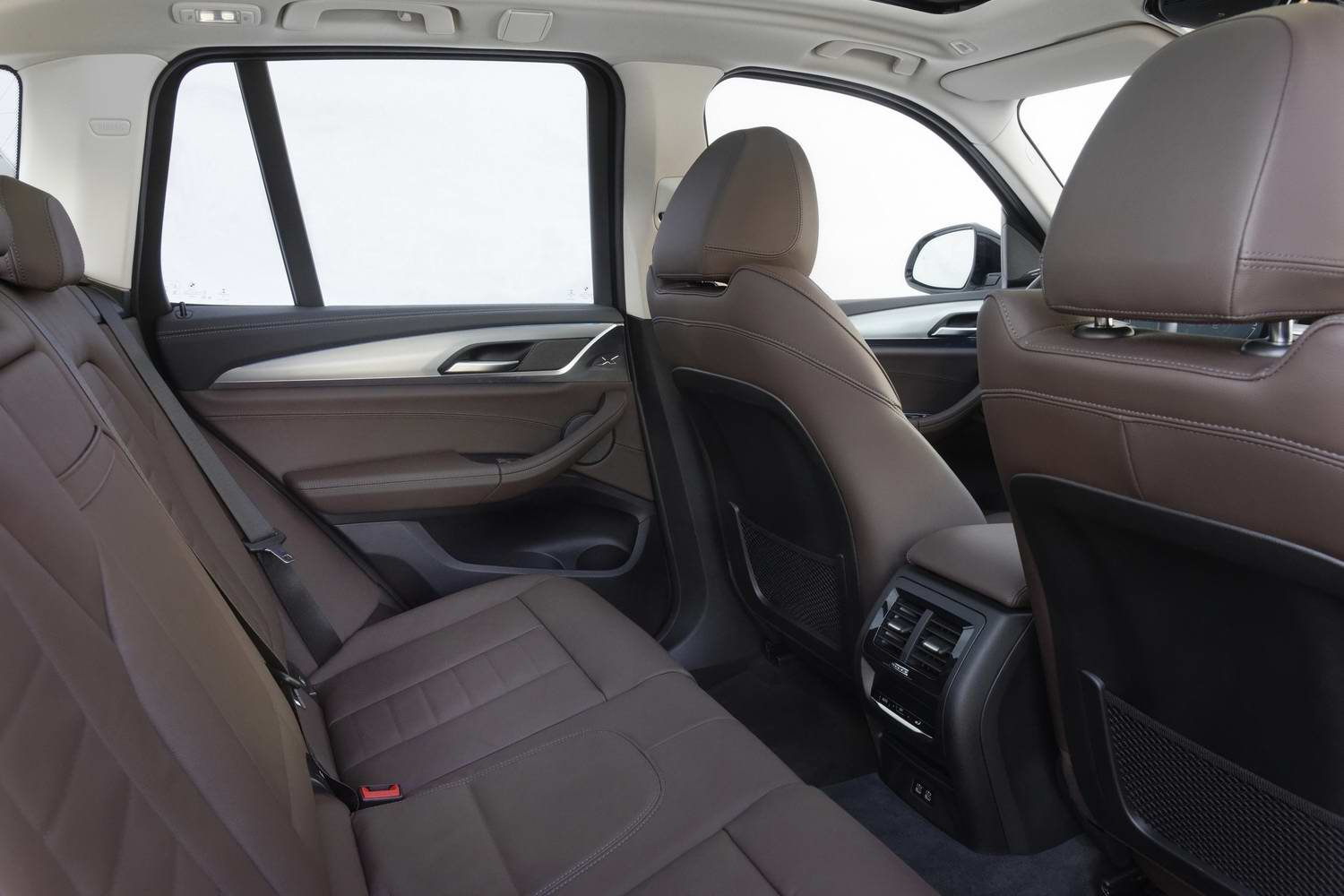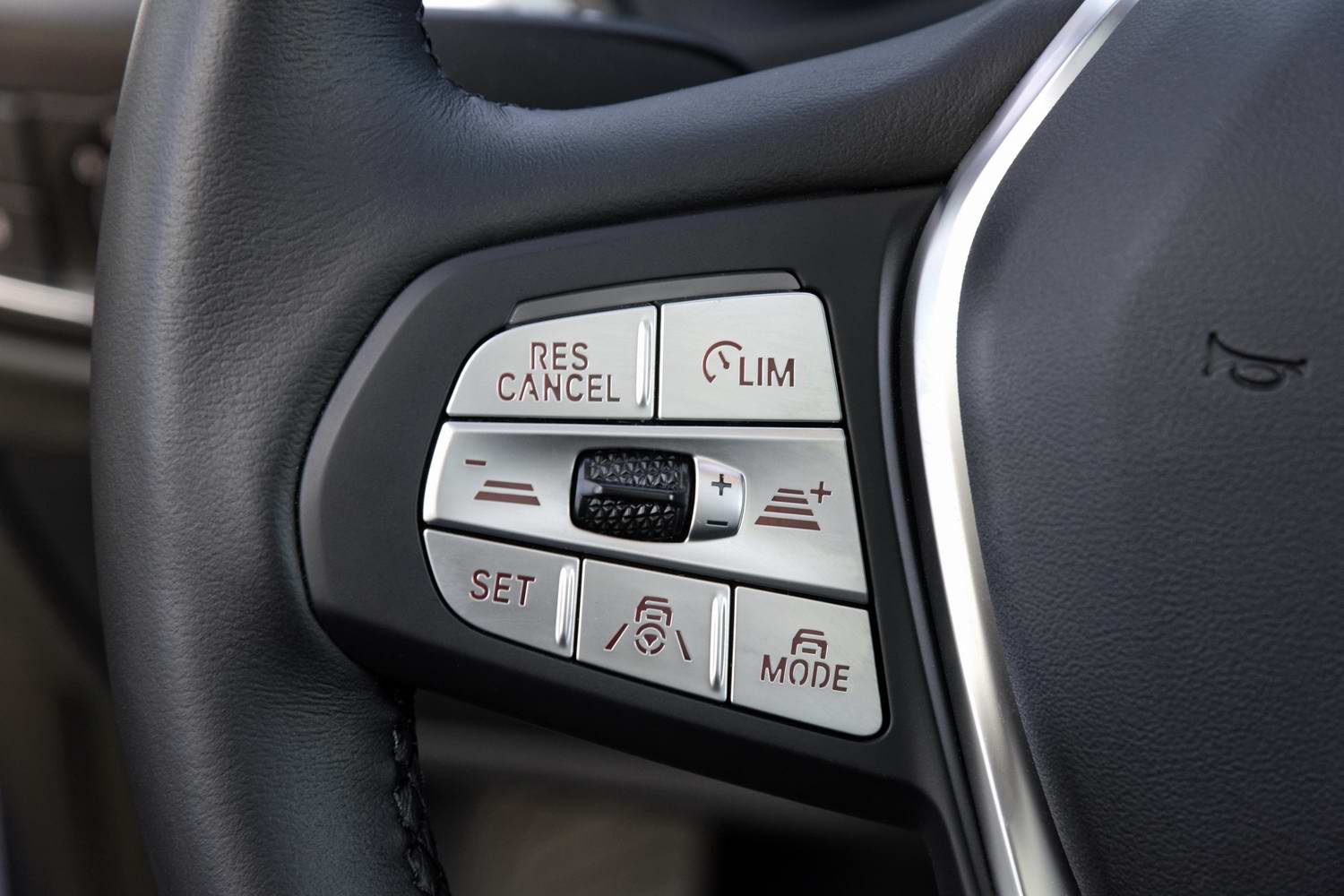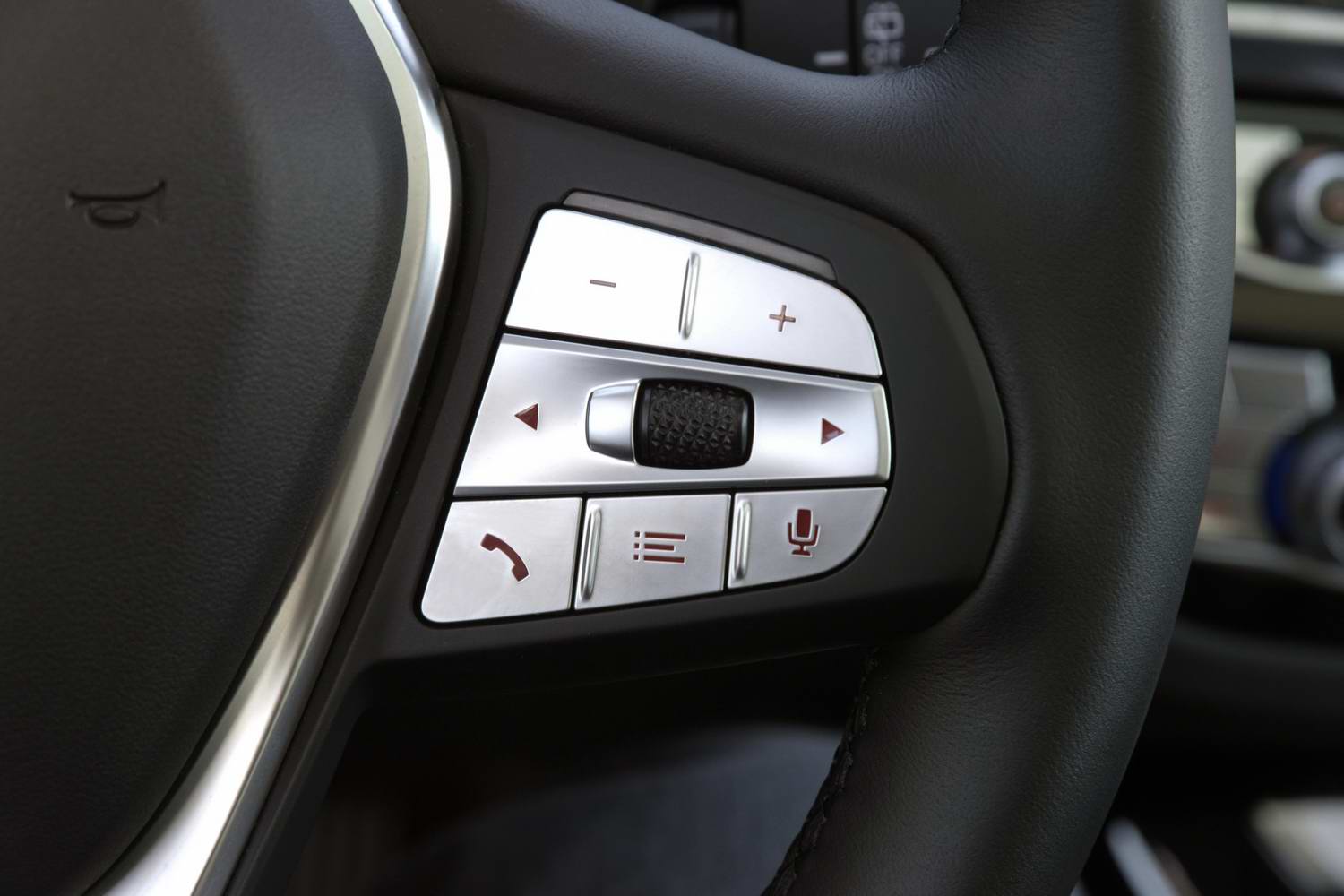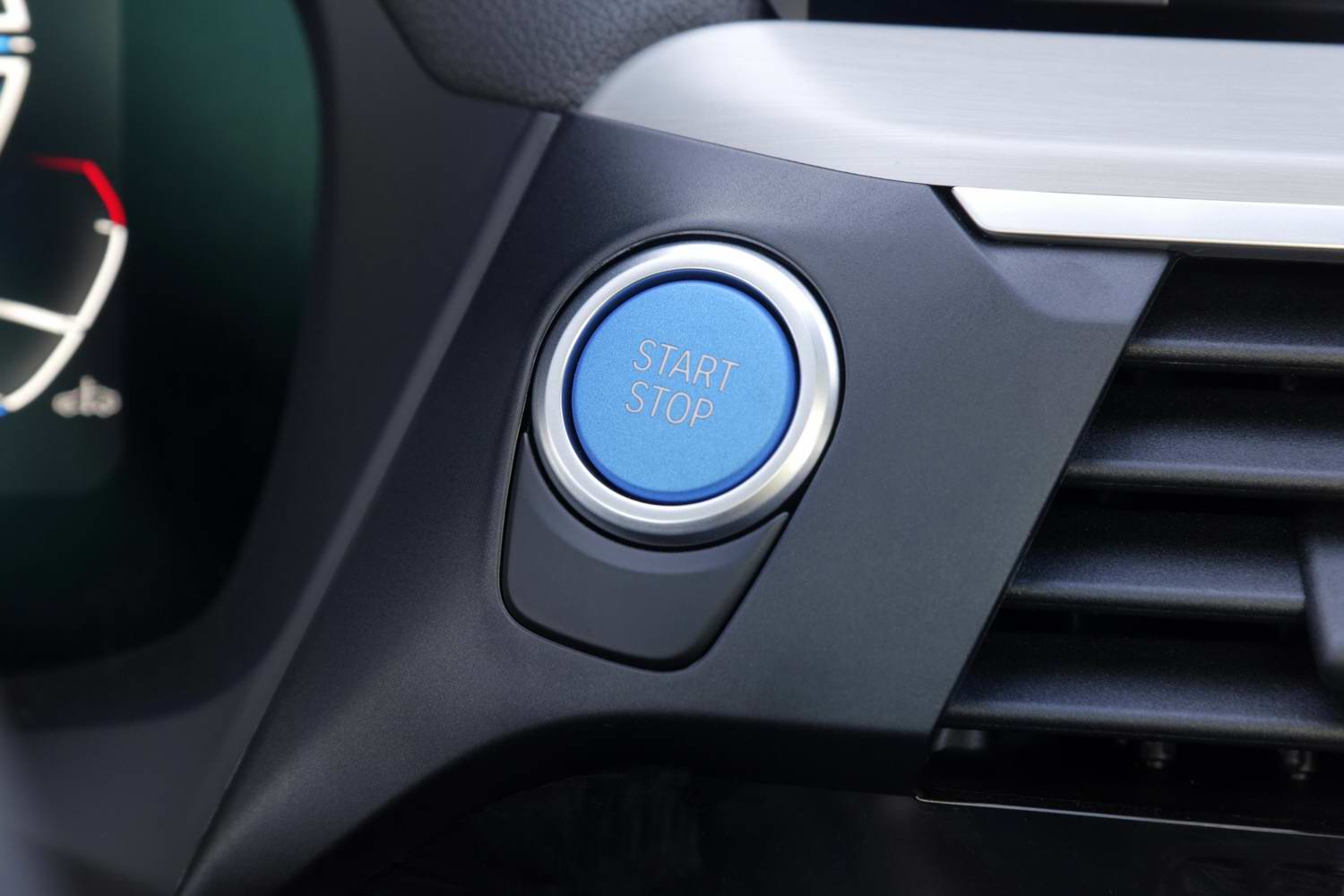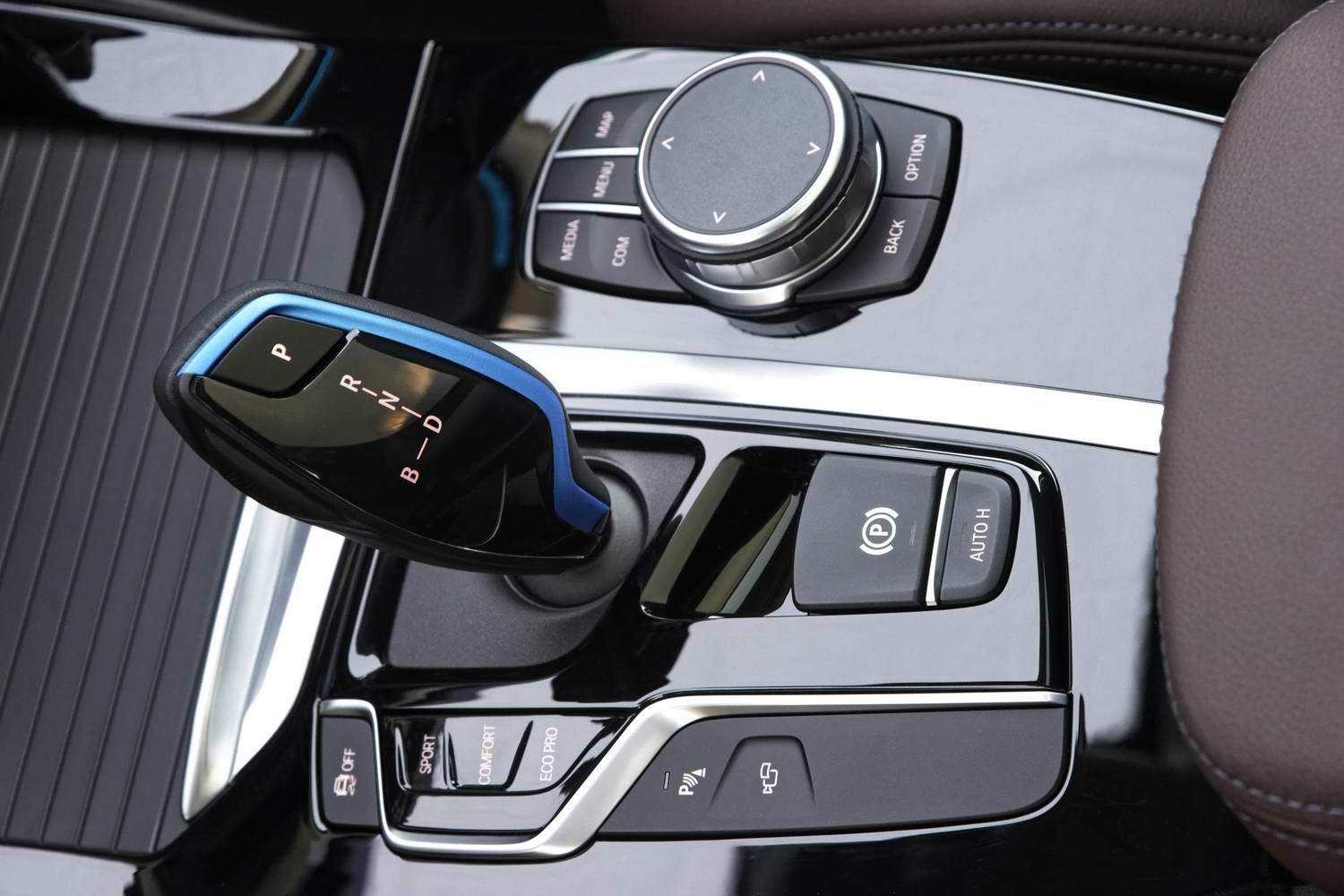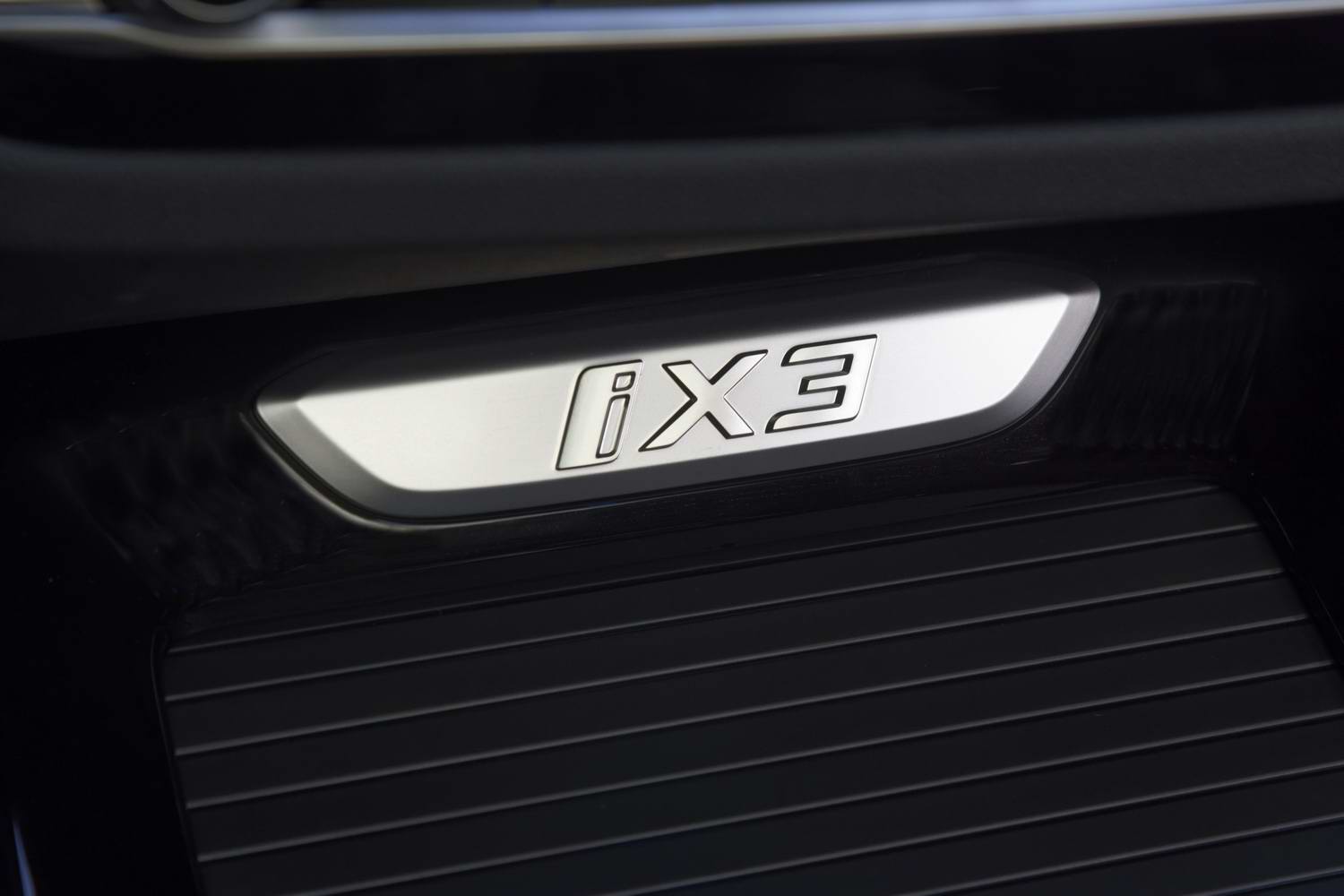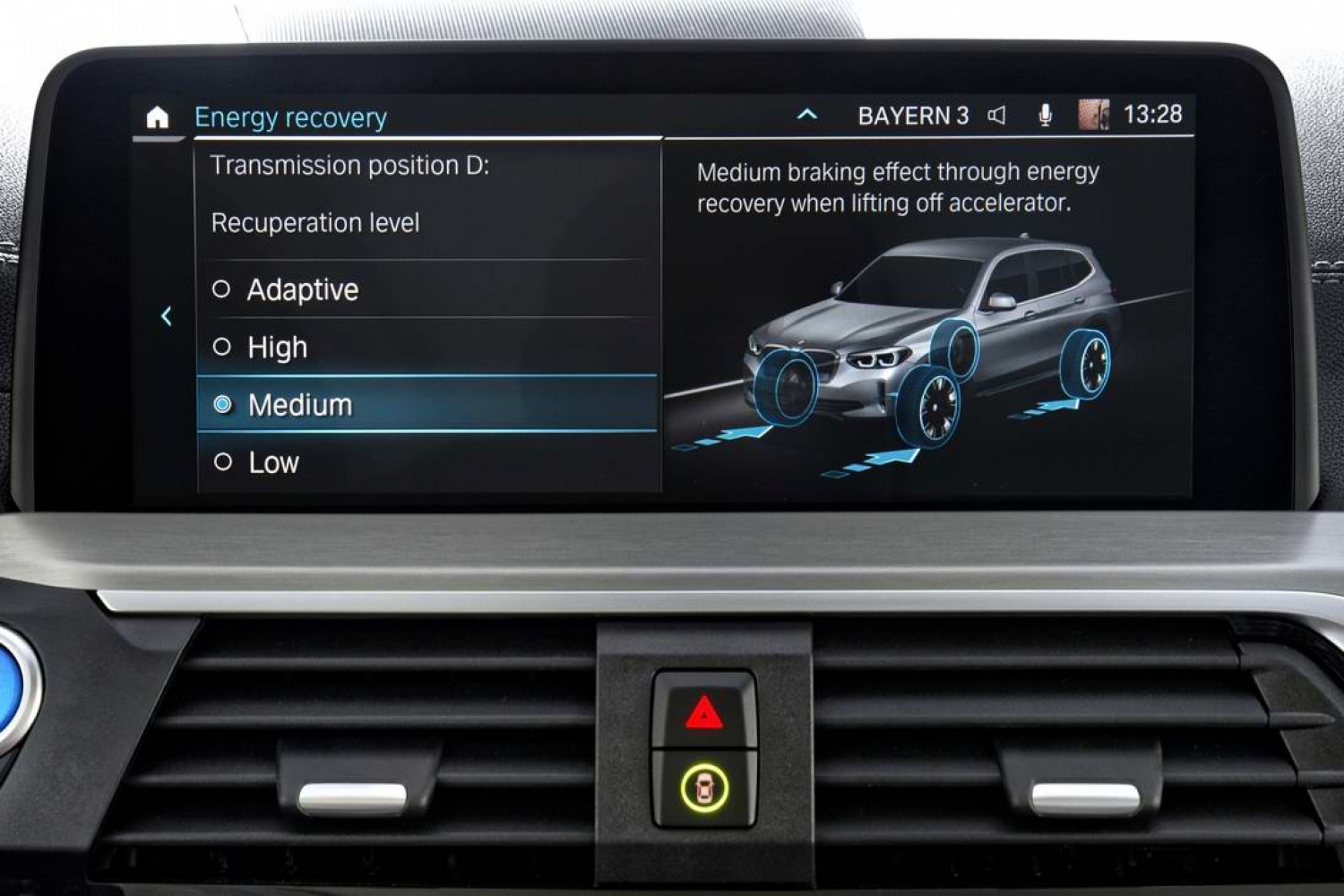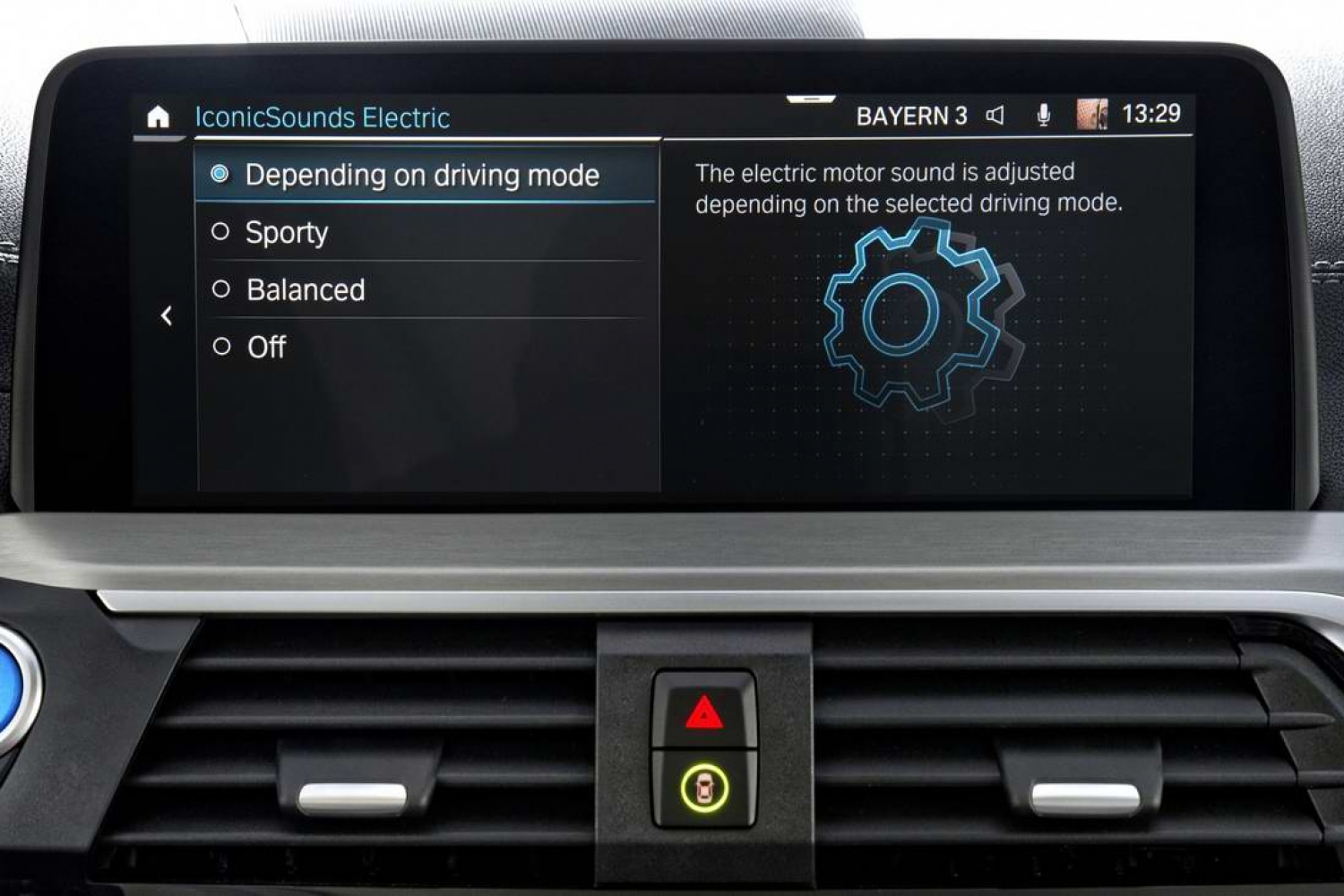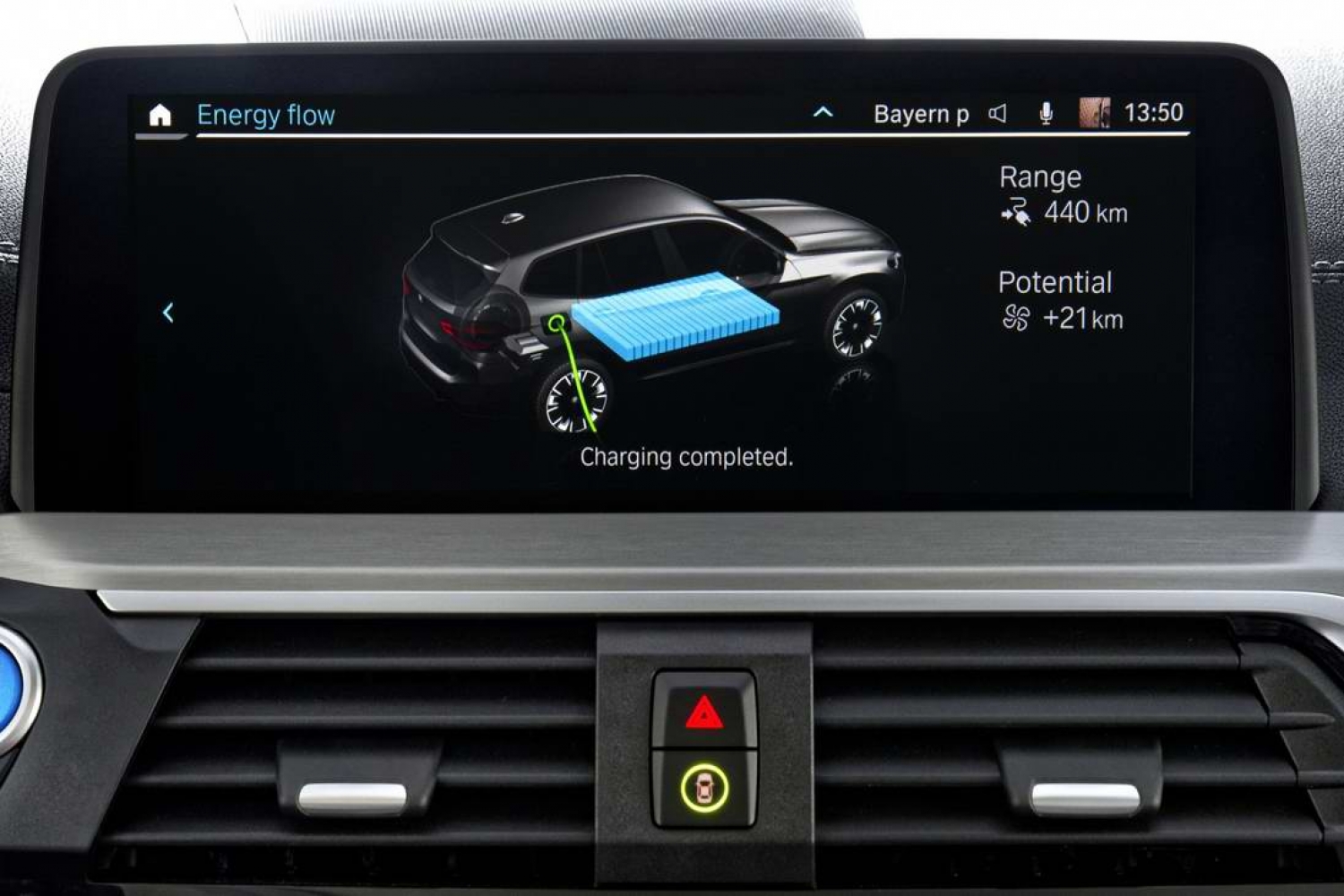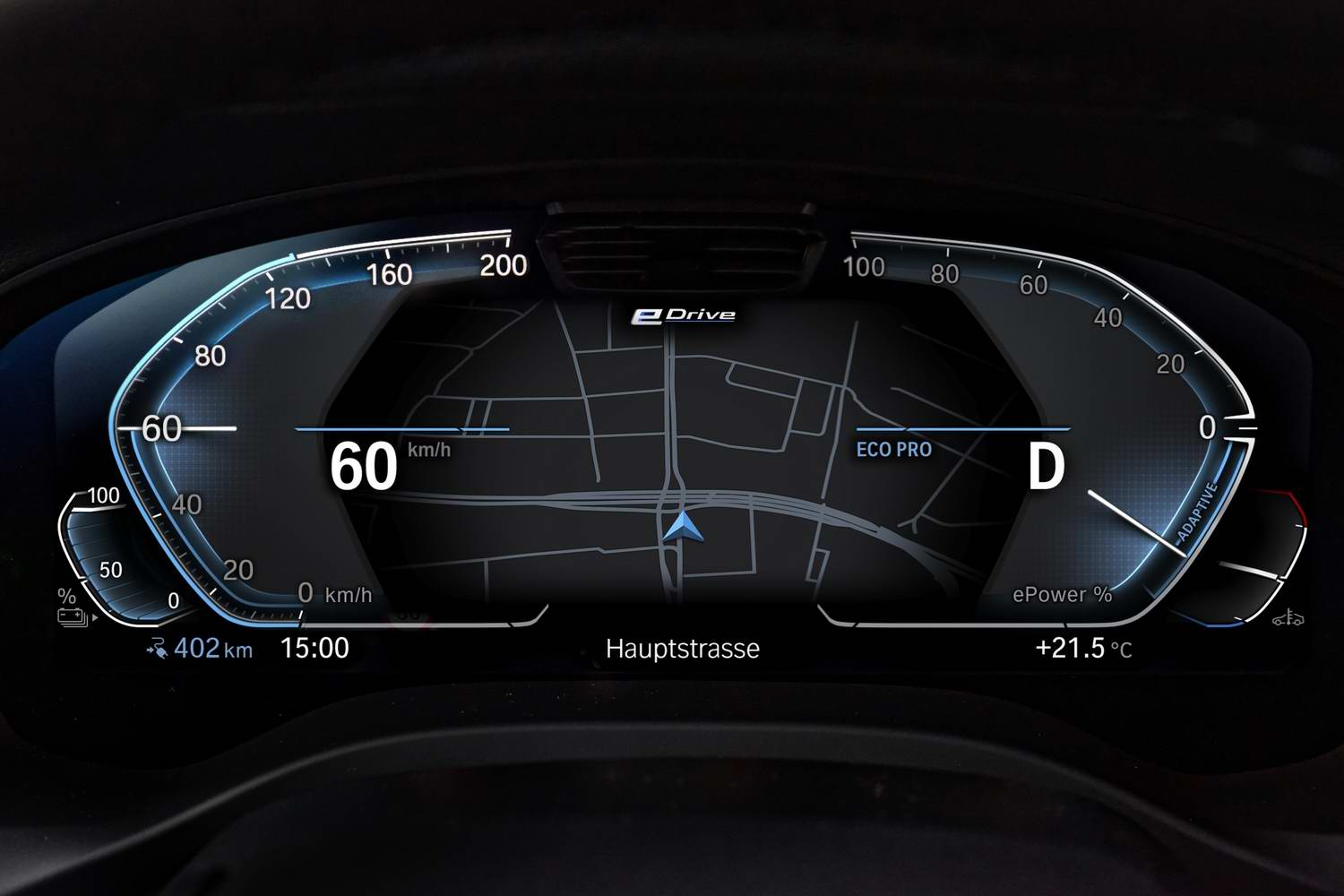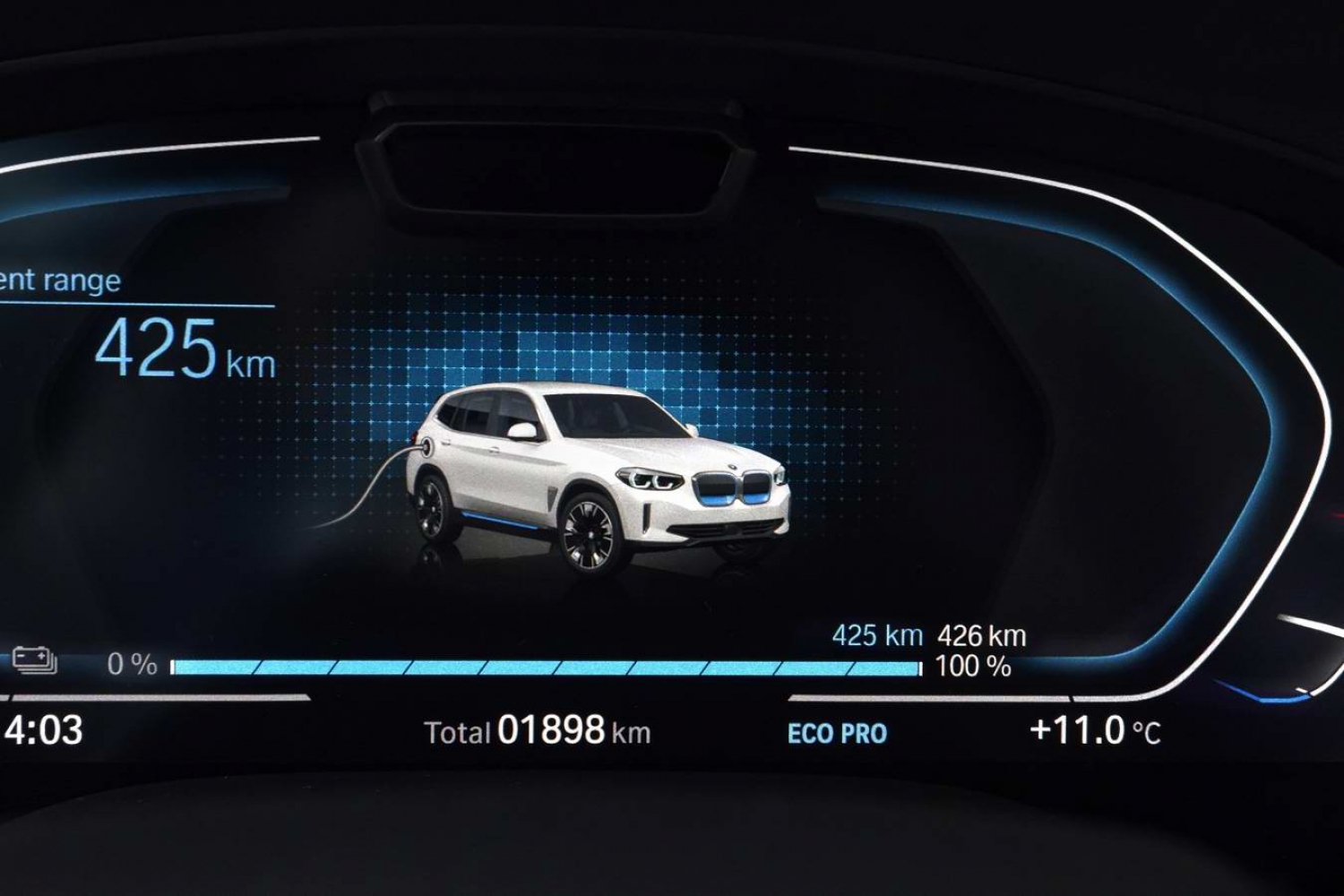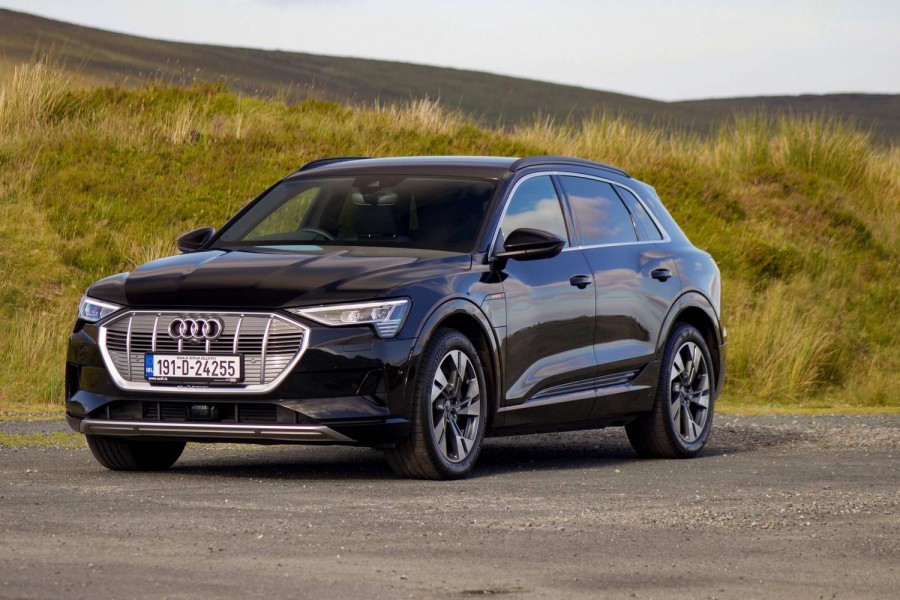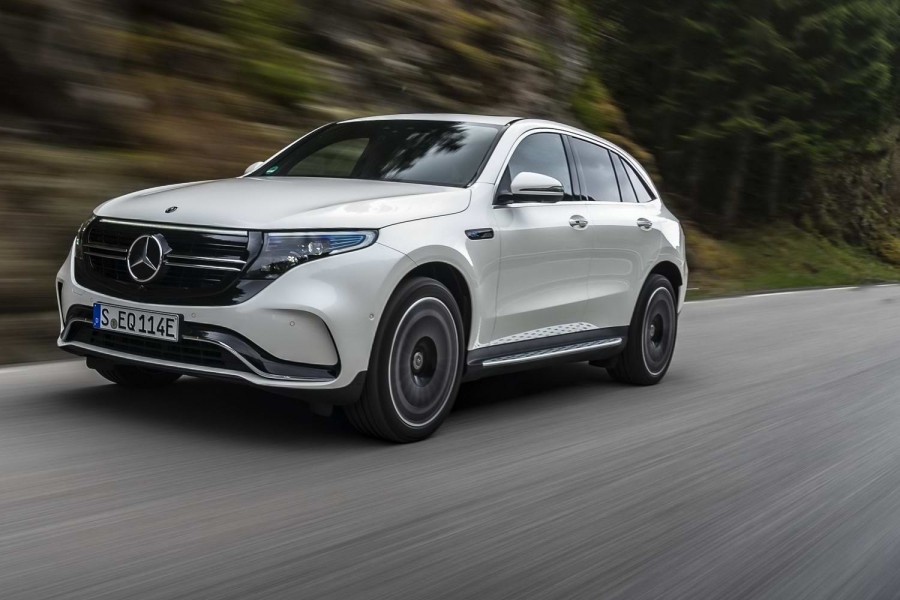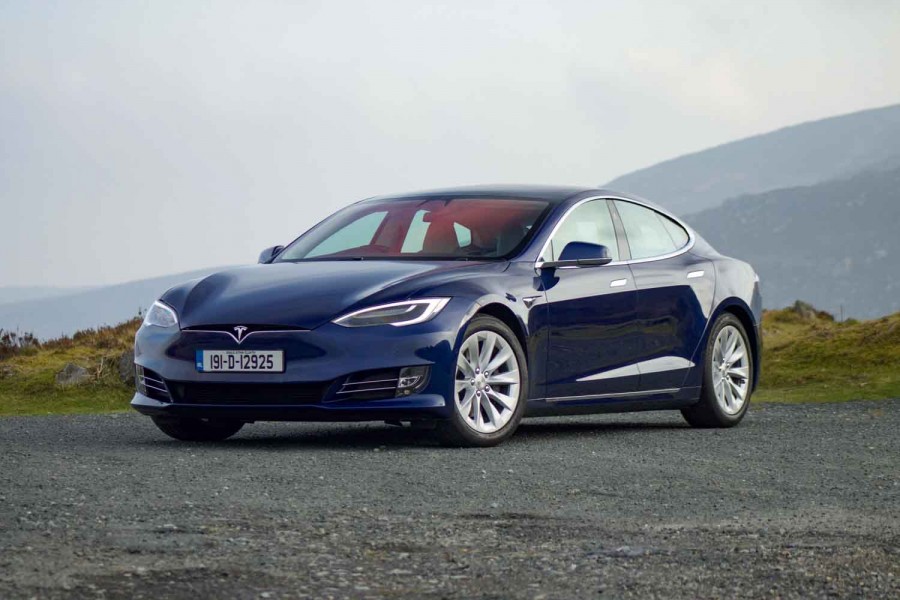Not everybody who drives an electric car wants it to look quite so much like, well, an electric car. Or so BMW thinks. That's why it has delivered the electric iX3 SUV that looks more like a BMW X3 than a BMW i3. It isn't racy and it isn't glitzy, and it isn't a virtue signaller. It's just an honest electric car based on the X3. So is it the future or, at an entry price of over €70,000, has BMW missed a trick?
In the metal
You know how the BMW X3 looks by now, right? Well, the iX3 looks a lot like that, with just enough bits altered to leave you wondering why you think it's different. There are blue accents inside the grille, aero wheels that cut drag enough to add 10km to the EV's range, more blue down the sills below the doors and new 'i' logo panels behind the front wheels. Other than that, the iX3 is very much a tweaked X3, right down to the 2,864mm wheelbase, the 4,734mm overall length and the 1,891mm width. It loses a touch of luggage space, shrinking down to 510 litres, but adds more layers and graphics to the multimedia screen in the dash. And don't look up front for a frunk. There isn't one.
The iX3 doesn't just look like an X3. It is, actually, an X3. It's built on the same architecture (slightly modified) and on the same production lines as its combustion engined and plug-in hybrid brethren. So, from its arrival next year, the iX3 will round out the X3 range, giving BMW the only SUV around with petrol, diesel, plug-in hybrid and full electric variants.
The current-excited synchronous electric motor, mounted on a special subframe at the back of the chassis, is good for 210kW of power (that's 286hp), 400Nm of torque and an amusing 17,000rpm. BMW says it will eke out up to 460km on the new WLTP test cycle. The battery consists of 188 lithium-ion prismatic cells arranged in a modular pack that allows BMW to repair any damaged cells or reuse them at the end of their lives. BMW claims it can recover 96 per cent of the cell material. It carries 80kWh of energy, but uses the middle 74kWh of the range, and can charge at up to 150kW of power from Ionity stations. That's enough for 100km of range in 10 minutes, or an 80 per cent 'tank' in half an hour.
The iX3's system charges both the 400V lithium-ion battery and the 12V on-board system, and can use both single- and three-phase current at up to 11kW. The battery efficiency is so much better than the i3's that BMW claims 18.5kWh/100km as the WLTP energy-consumption figure for the base iX3, and 19.5kWh/100km for the high-spec Premier Edition Pro on big wheels. It does all of this without rare-earth minerals because BMW has done away with the permanent magnets inside the electric motor, which also gives the electric motor far less friction to deal with when it's sailing.
The iX3 has been developed for BMW's latest generation of crash-avoidance safety, with its driver-assistance systems allowing drivers to almost achieve Level 3 self-driving below 60km/h. There's virtually no lane bounce from the car constantly fighting to keep itself inside a lane, partly because it benefits from the tightest digital mapping around and partly because the detection hardware keeps getting better. The sensors are now so good that you not only have a screen display containing all the vehicles around you, including behind you and beside you, but it also shows what type of vehicles they are. Cars, trucks, vans, caravans, motorbikes or even bicycles show up. Its active cruise control uses sophisticated blind-spot detection, too, along with mitigation for rear-end collisions and cross-traffic hazards in reverse. Its crash protection suite runs to front and side airbags for the driver and front passenger, head airbags for the four outer seats, seat-belt pretensioners, belt-force limiters in the front and tyre pressure indicators.
Driving it
Calmly, gently and stress free. That's the short version.
The peak outputs sound fine until you realise that the iX3 weighs in at a toe-crushing 2,185kg, with 518kg of that soaked up by the battery pack alone. And so it will run to 100km/h in 6.8 seconds and on to a top speed of 180km/h. Now, 6.8 seconds isn't startlingly quick, but neither is it slow for a BMW SUV without an M badge near it. It certainly doesn't feel slow on the road.
The hardware is similar to the X3's, with struts up front and a multi-link setup at the rear end, plus the adaptive suspension, with its electronically controlled dampers, in charge of keeping stuff stable. All that weight helps keep the iX3 from being annoyed by bumps or undulations, and it passes over them with almost total indifference. That it's quiet is a given. That it's this quiet is a wonder of engineering and development perseverance. It moves silently away, without even a groan from the suspension over bumps. It remains stubbornly silent until the wind makes its own arguments beyond about 80km/h and, even then, its impact is minimal. The car is just calm in the powertrain, totally willing to perform its tricks or take a back seat whenever the driver simply wants to blend in and move from one place to another, without fuss. The steering starts out feeling disconnected, but becomes more accurate with familiarity, and the chassis has a lovely way to flow through a series of bends.
In fact, there's just one way to ruffle the iX3's feathers, and that's by using a range-maximising trick from the i3: single-pedal driving. The iX3 allows a single flick of the gear lever to deliver adjustable levels of regeneration and that allows for more than 90 per cent of all retardation to be done by the electric motor, rather than the brake discs. And all of that kinetic energy turns into electrical energy, to be added to the pile. The intensity of that regeneration can be switched between low, medium and high settings or simply left in the adaptive mode to figure it out for itself. The trouble is that, at the higher intensities, the single-pedal thing can make people inside the car, including the driver, feel a bit nauseous. The issue is the constant forward-backward head movement, because every time the driver lifts off the accelerator pedal, even slightly, the car decides it's time to harvest energy. It does this by using the electric motor to add resistance, which means slowing down. Hard. It's a much nicer car when it's just left in its adaptive mode, which returns it to the fluid, calm state it seems to prefer.
The body control, for such a heavy car, is exceptionally good. The lean from side-to-side in corners is low (maybe because the battery lowers the centre-of-gravity by more than 70mm over the stock X3) and it reacts beautifully to fast direction changes. It can be convinced to carry frankly silly cornering speeds if you set it up early enough to overcome the mass and it becomes a fun thing to drive while it's doing it.
With all due apologies to Herr Zimmer, the artificial sound treatment is nice and all, but scarcely necessary because the car's intrinsic noise levels are so low that it's actually soothing to revel in the silence. The sound system is brilliant, too, and that becomes more important when there's silence to overcome and no engine and exhaust noise to cover up any imperfections.
What you get for your money
BMW Ireland has had its iX3 order books open for while now and the sales race will begin with two limited-edition versions called the iX3 Premier Edition and the iX3 Premier Edition Pro. Their equipment levels take a tangible jump over the stock X3 fleet, with pieces like the panoramic glass roof, a three-zone climate control system, 20-inch aero alloys, active cruise control, adaptive suspension and an automatic tailgate all standard.
The initial colour palate will include Phytonic Blue, Sophisto Grey and, with what we hope are strong hints of irony, Carbon Black and Mineral White, and there will also be high-gloss black or brushed aluminium exterior trims. There are four interior leather colours to choose from, plus wireless phone charging, Android Auto and Apple CarPlay, heated front electric seats, tinted windows and ambient interior lighting.
The Premier Edition Pro will add a head-up display, gesture control, Parking Assistant plus, automatic high beams, keyless access, a Harmon Kardon surround sound system and a few other tricks to justify its jump to €74,105.
BMW has even collaborated with Hollywood composer Hans Zimmer to come up with a range of sounds to come out of those same speakers, lest the EV silence has you freaking out instead of geeking out.
Other than that, you also get the top end of BMW's latest operating system, complete with over-the-air updates and both Apple CarPlay and Android Auto capability.
Summary
It's true, the BMW iX3 could be quicker. And yet, that's not quite the feel of the segment and it's not quite the role of the iX3. This is the EV that isn't out to frighten anybody, nor shock anybody. This is the EV to convince any and every occupant about the future of EVs and that there's nothing about them to be scared of. And it does a wicked job of that. And if you've never considered an EV because you didn't want to stand out from the crowd, this one is a fairly good place to start.

